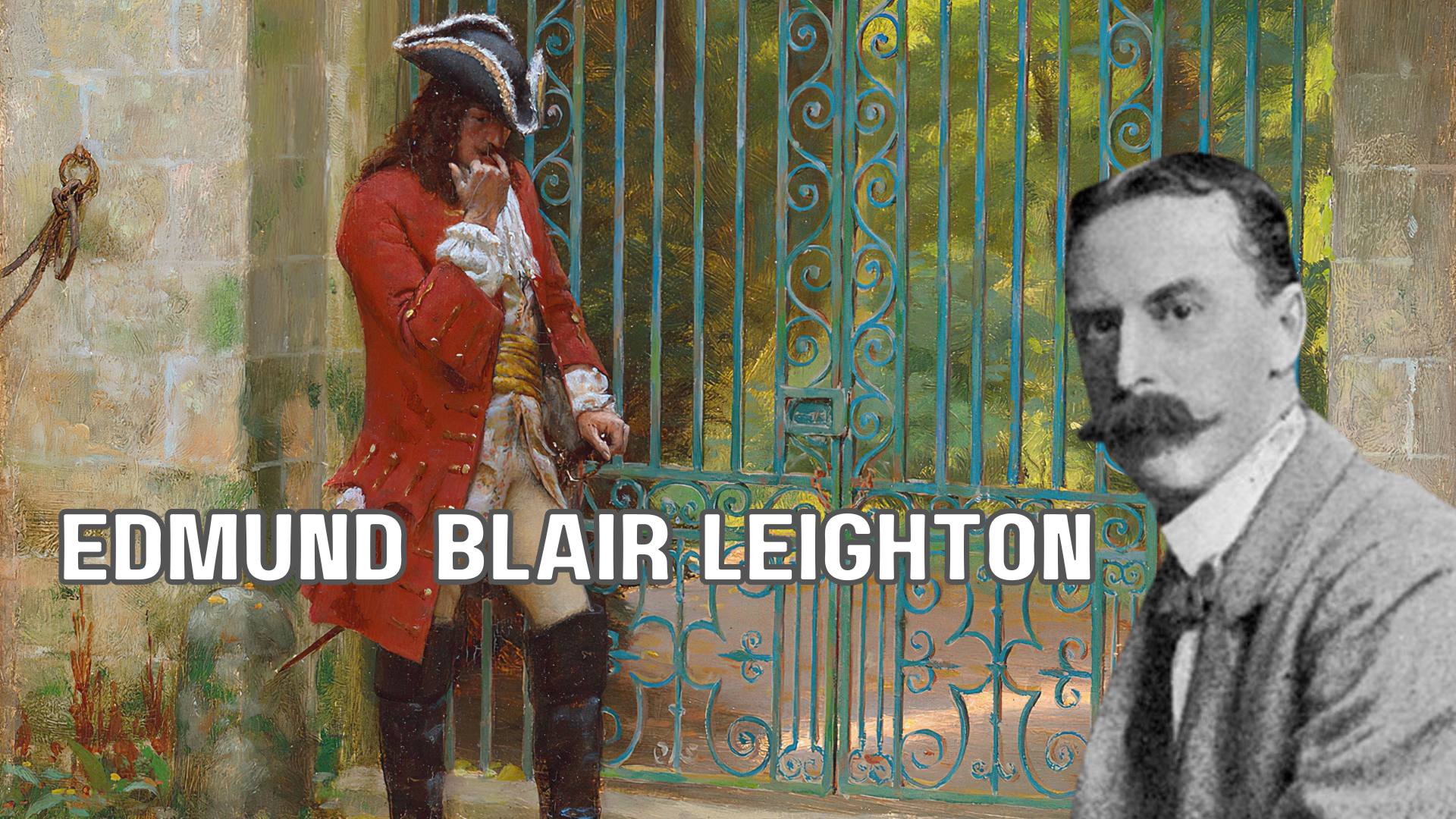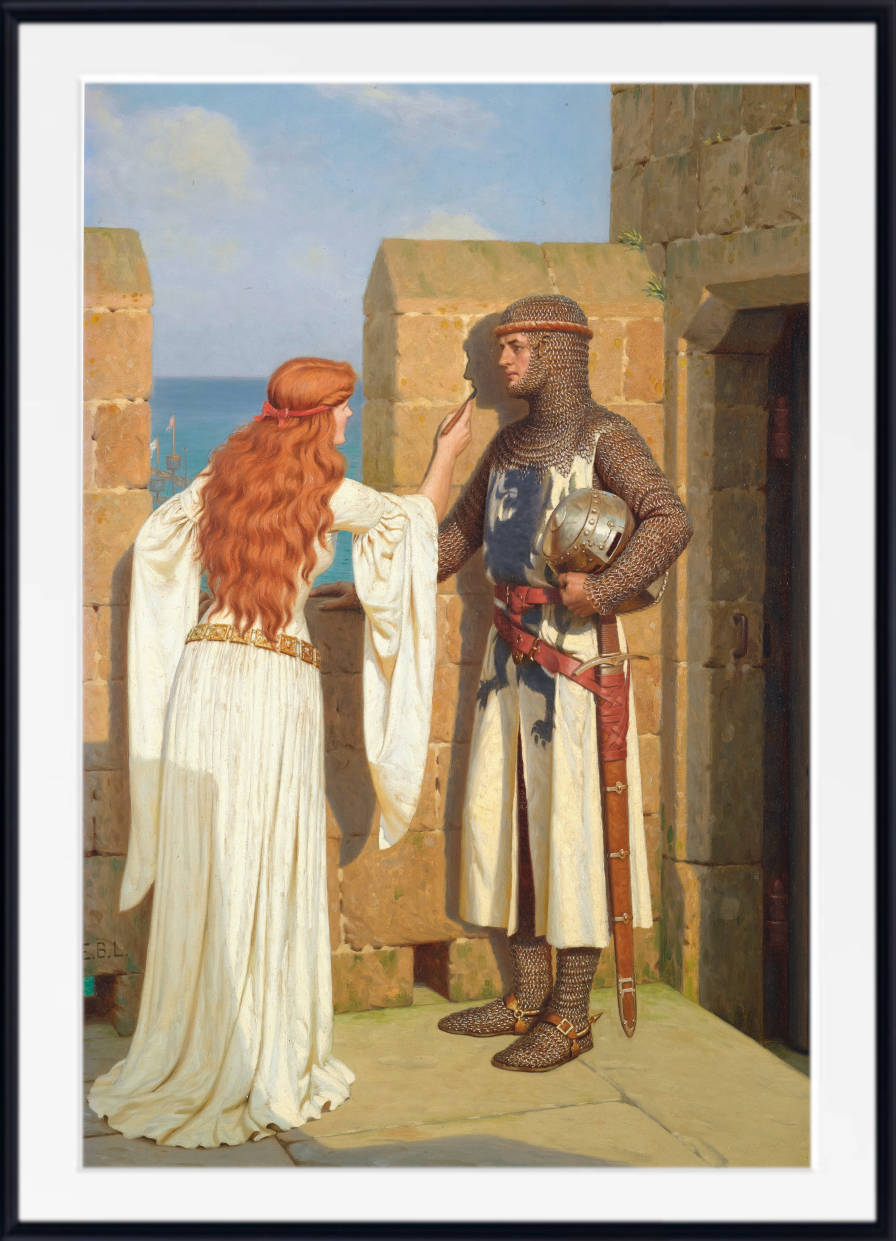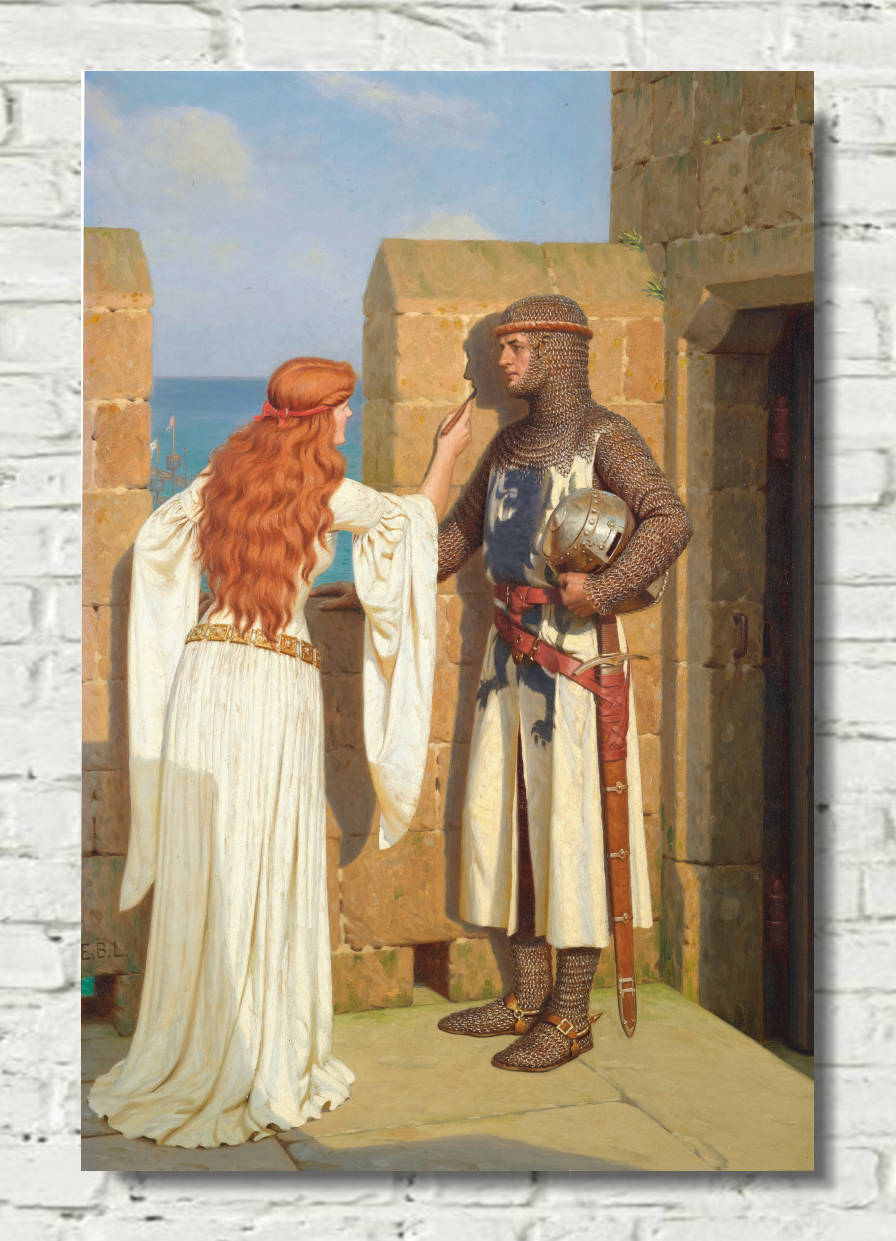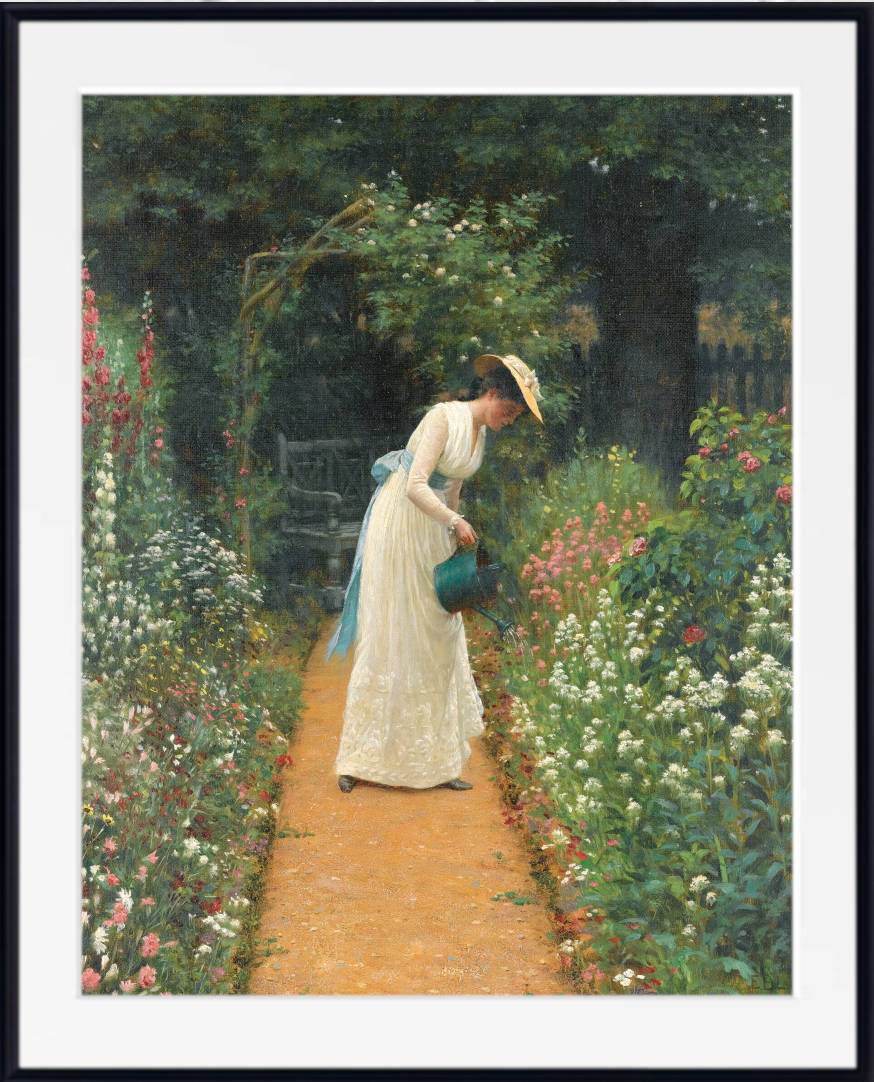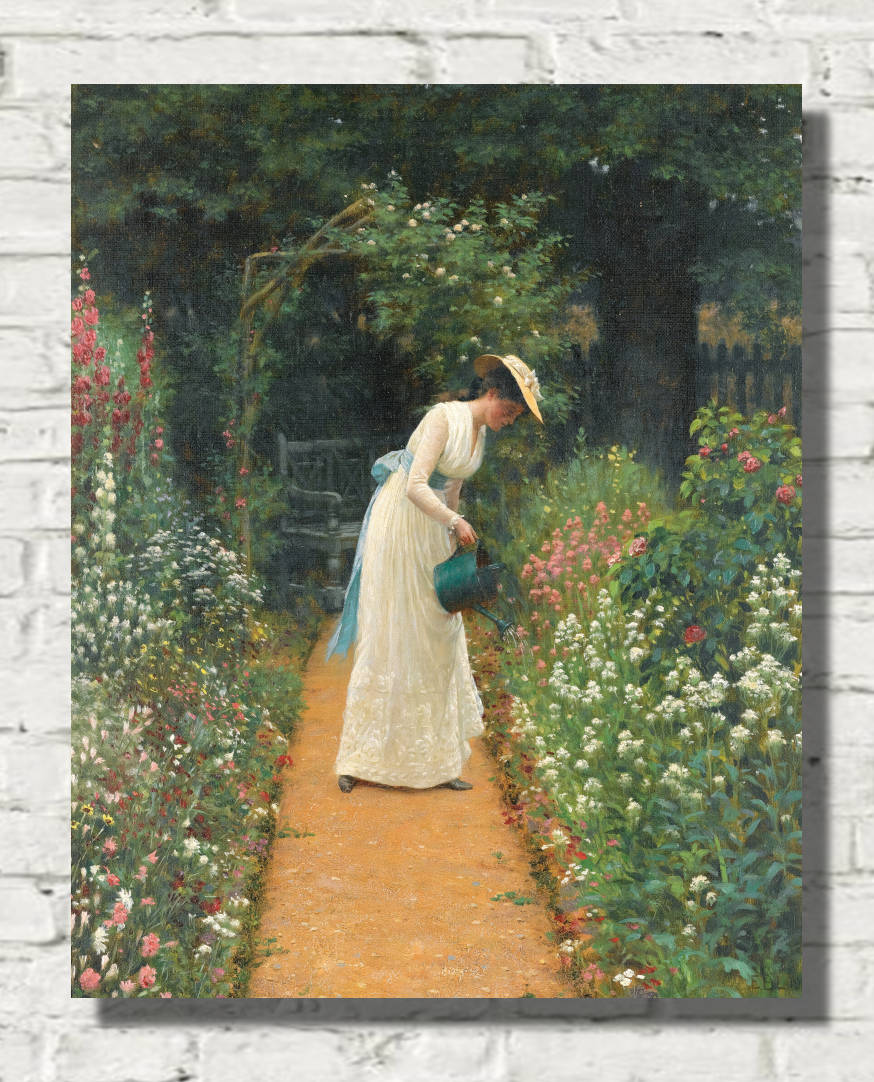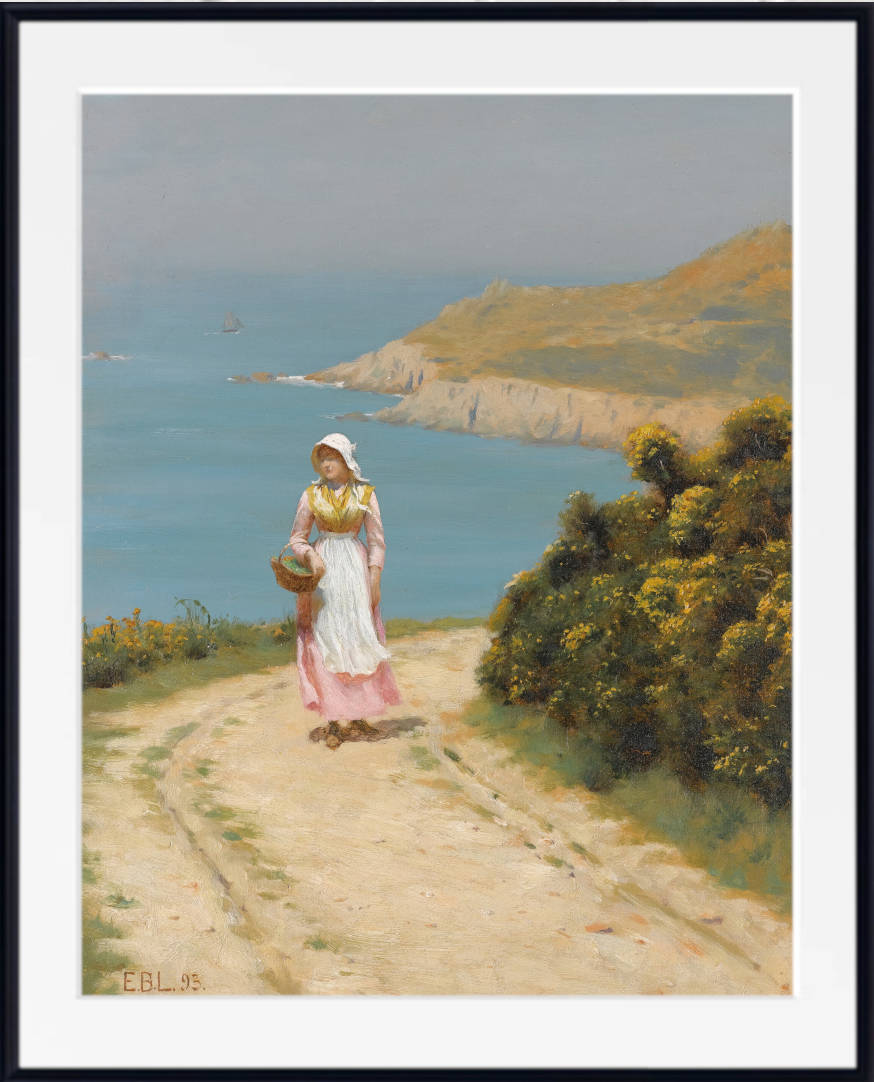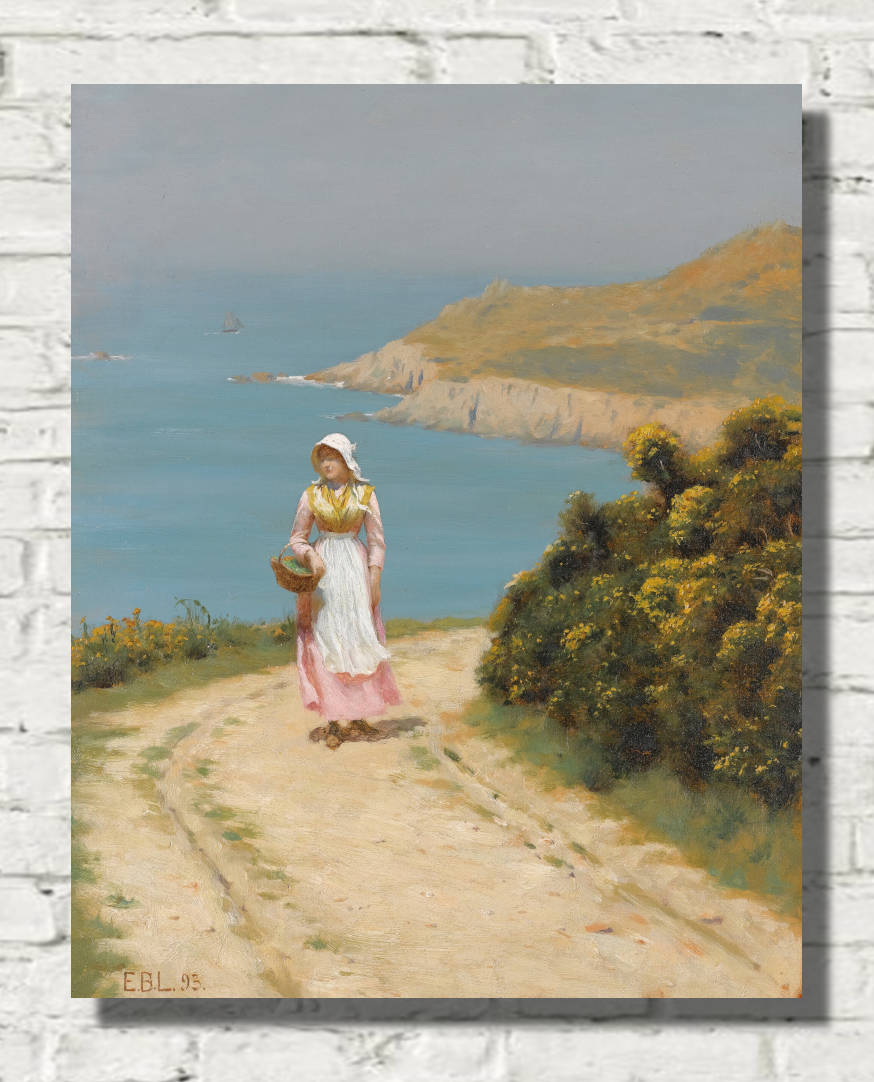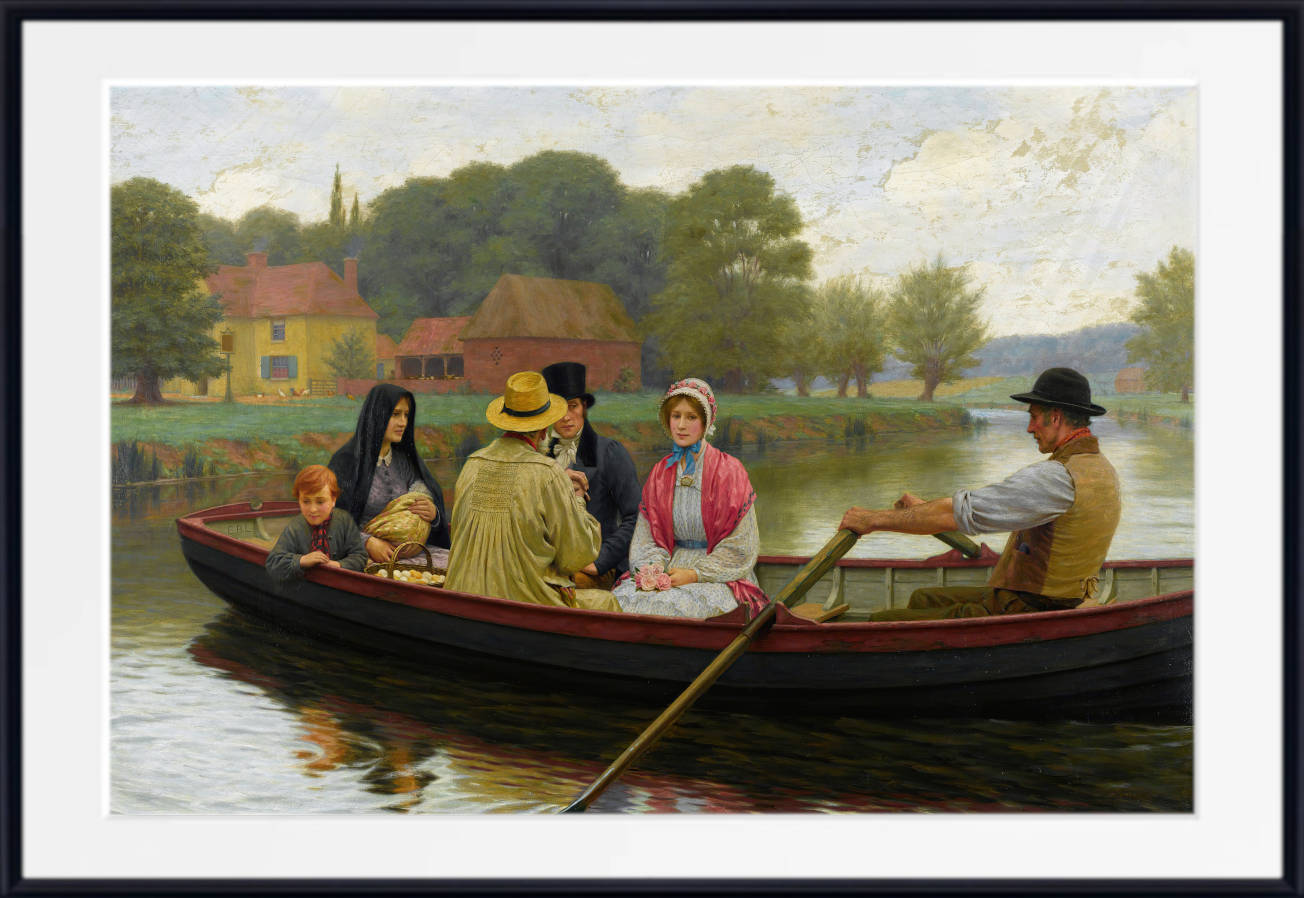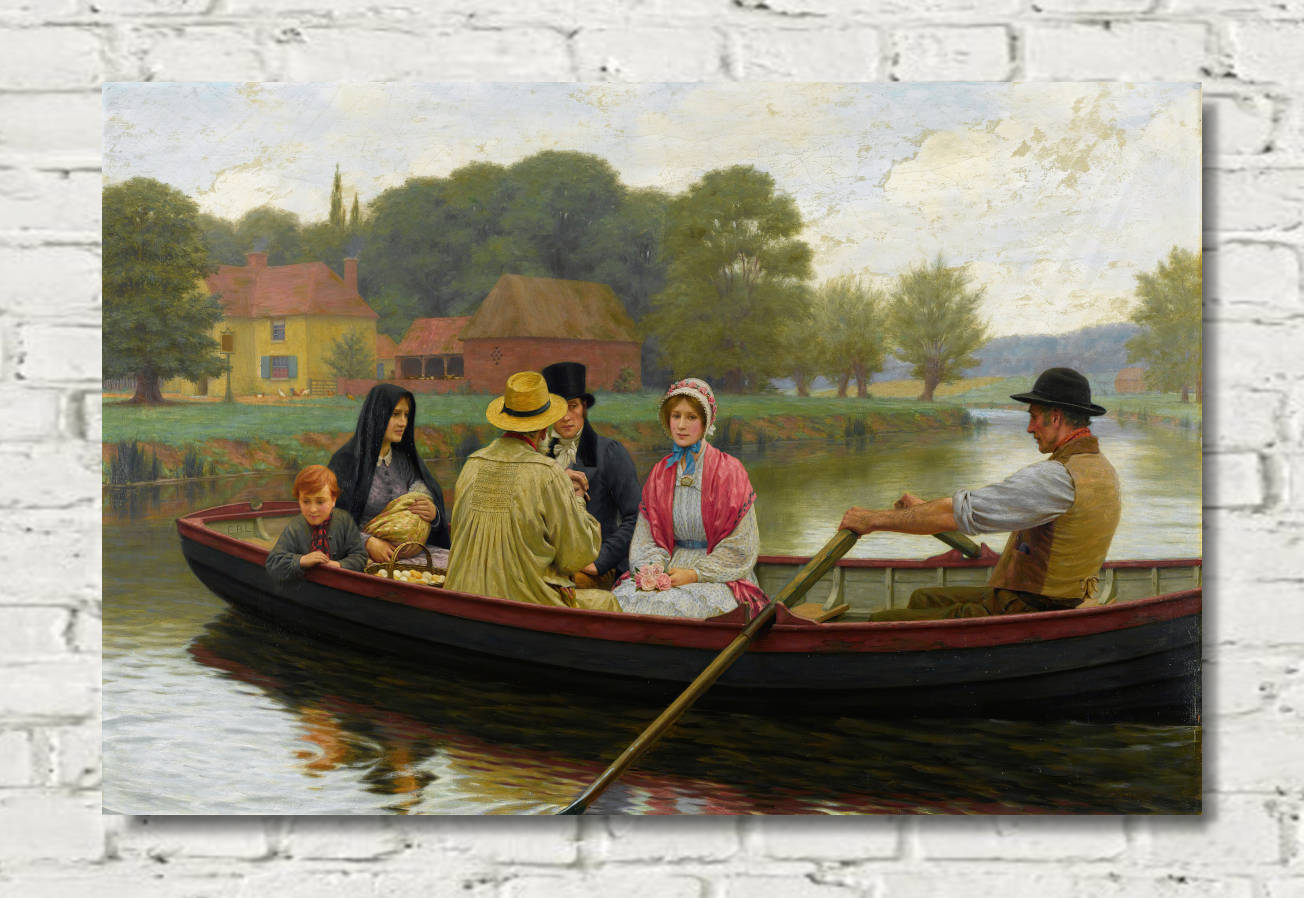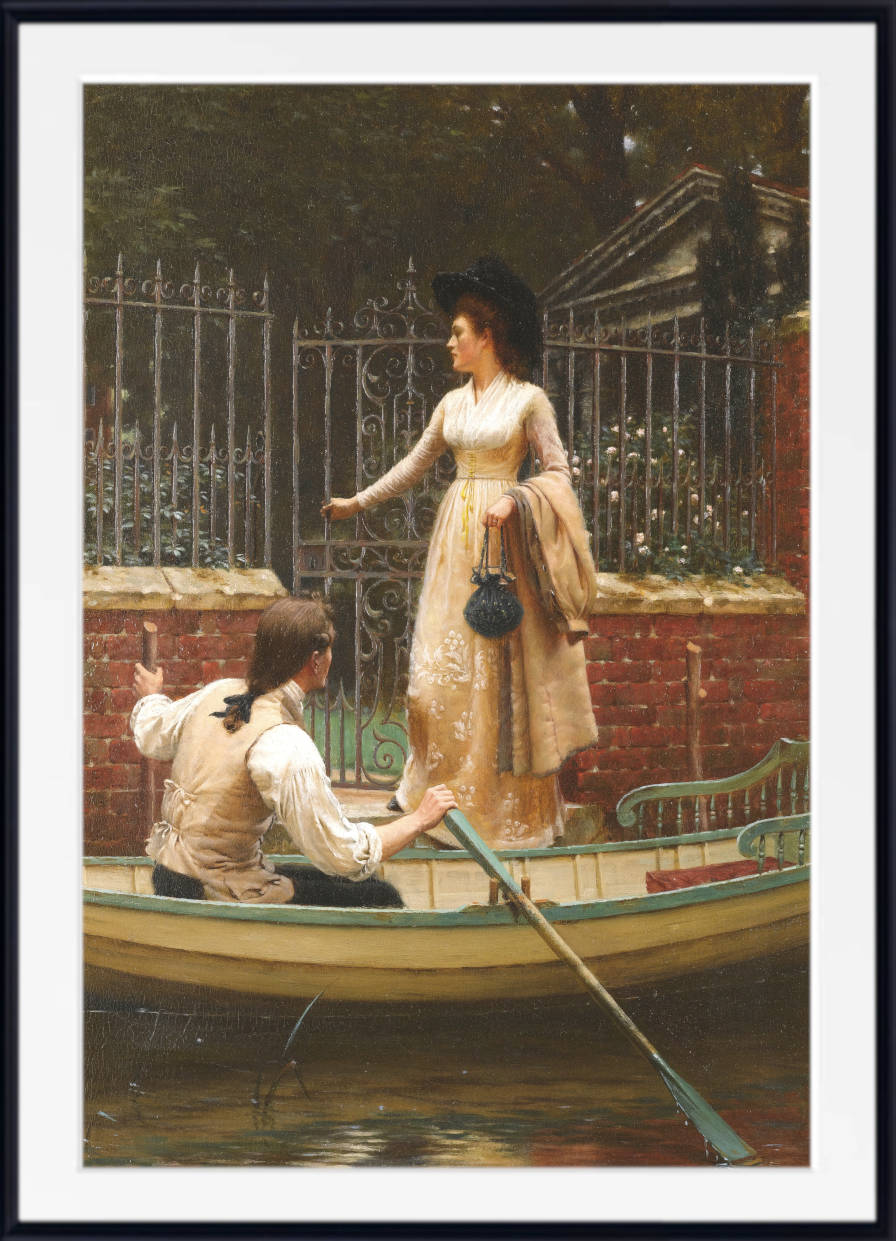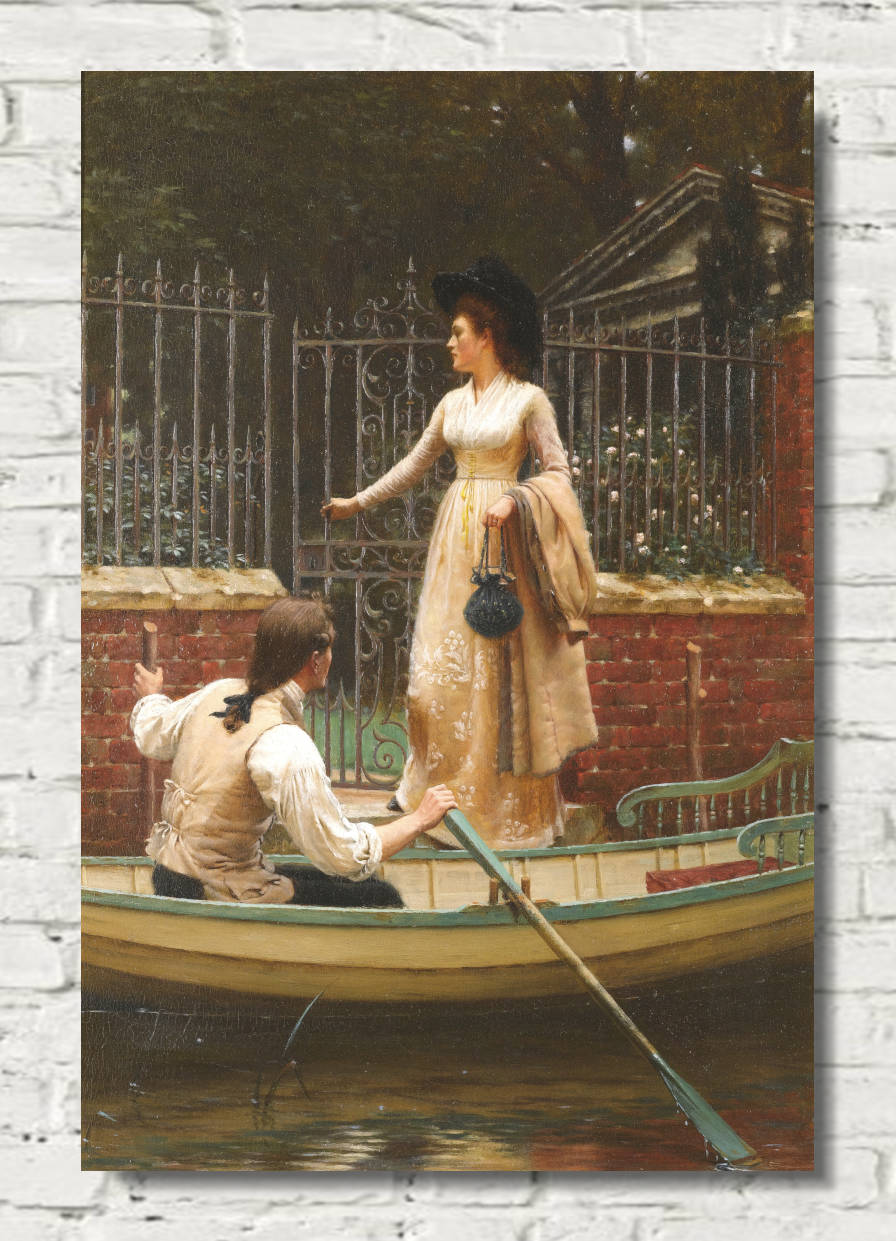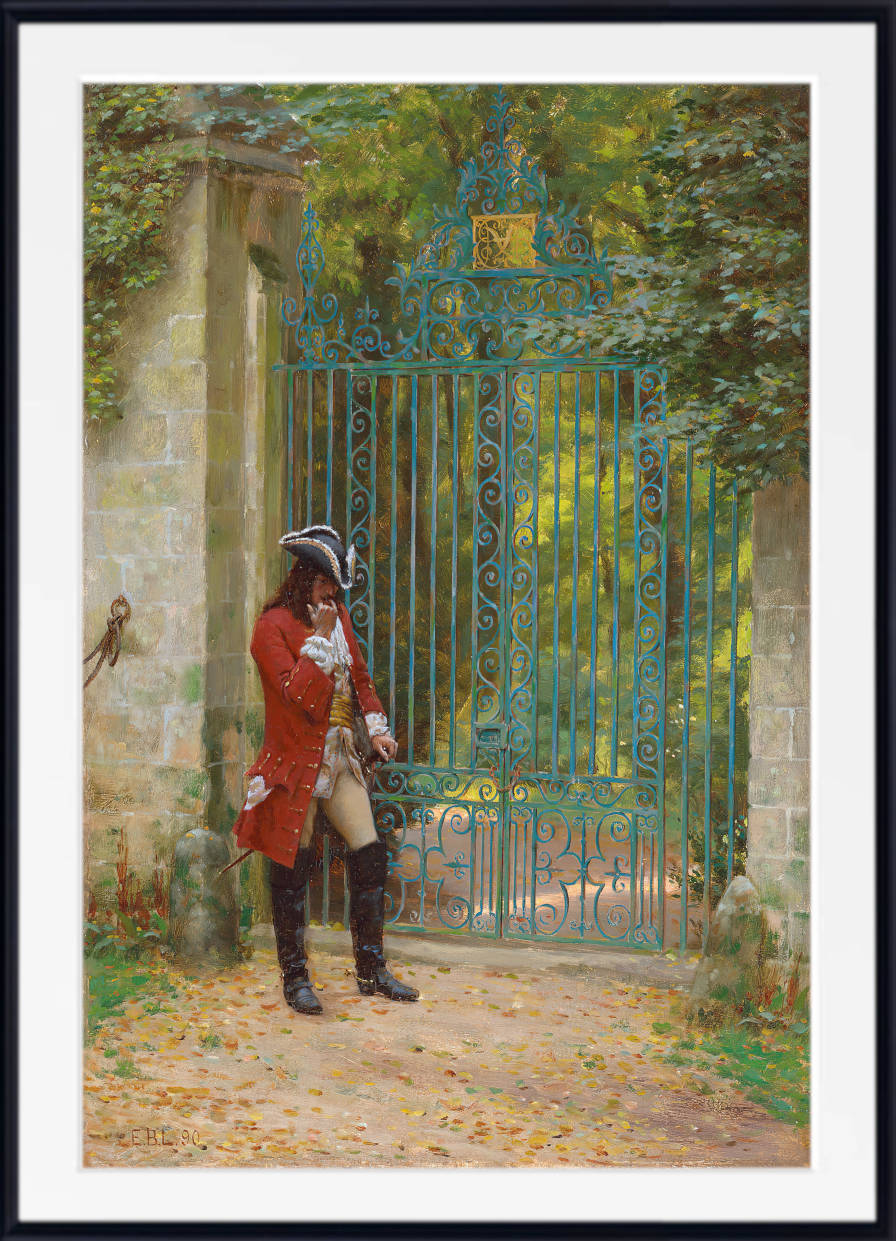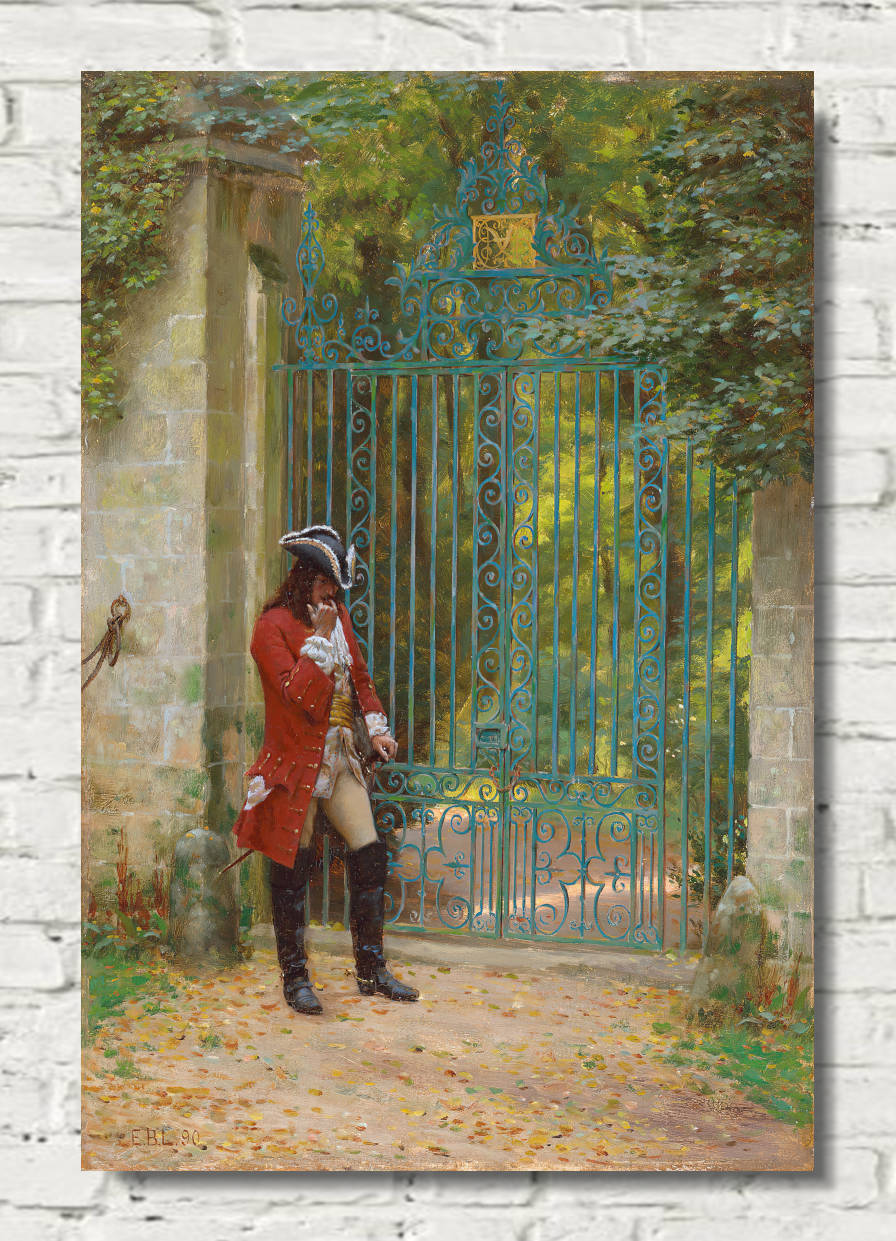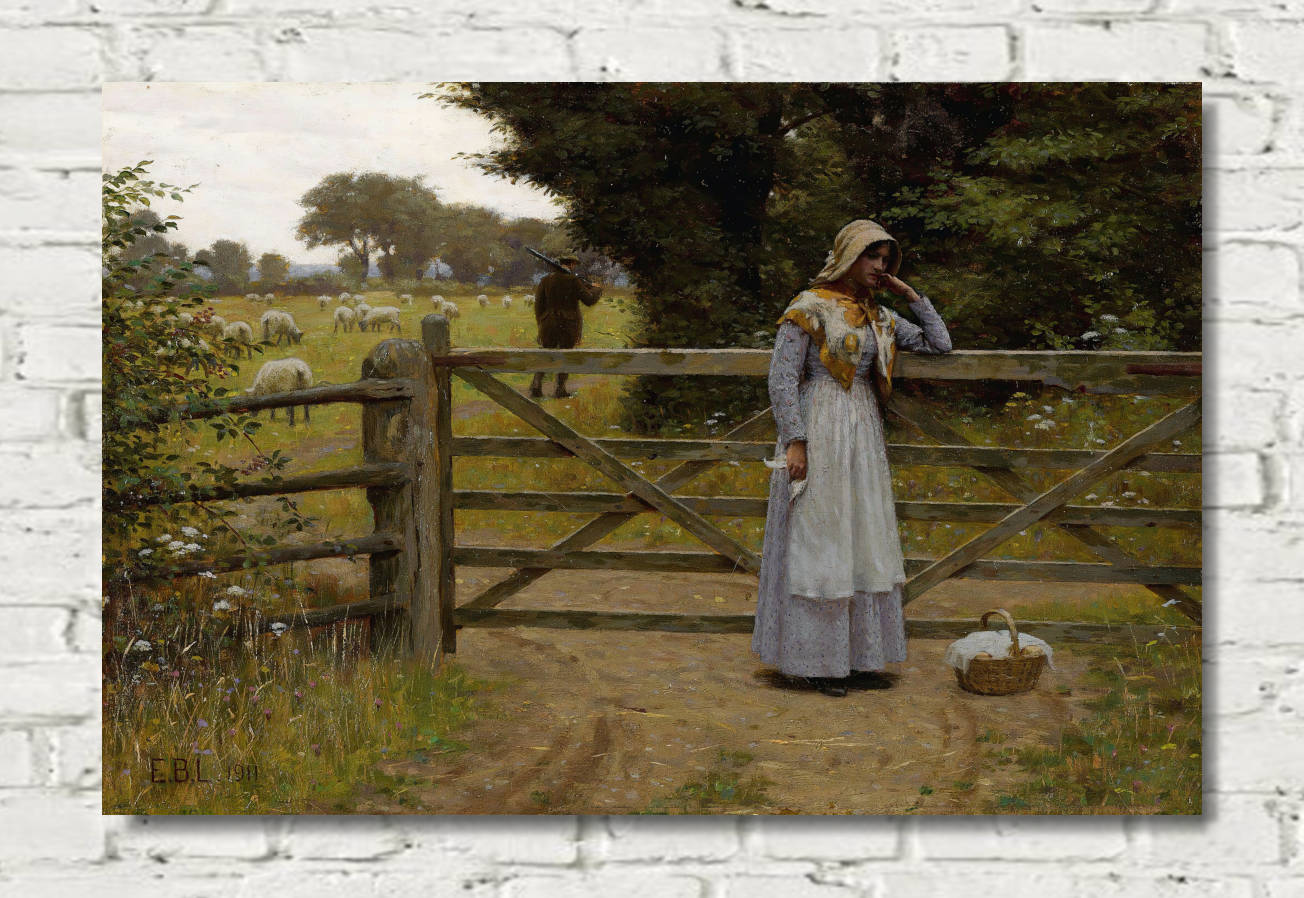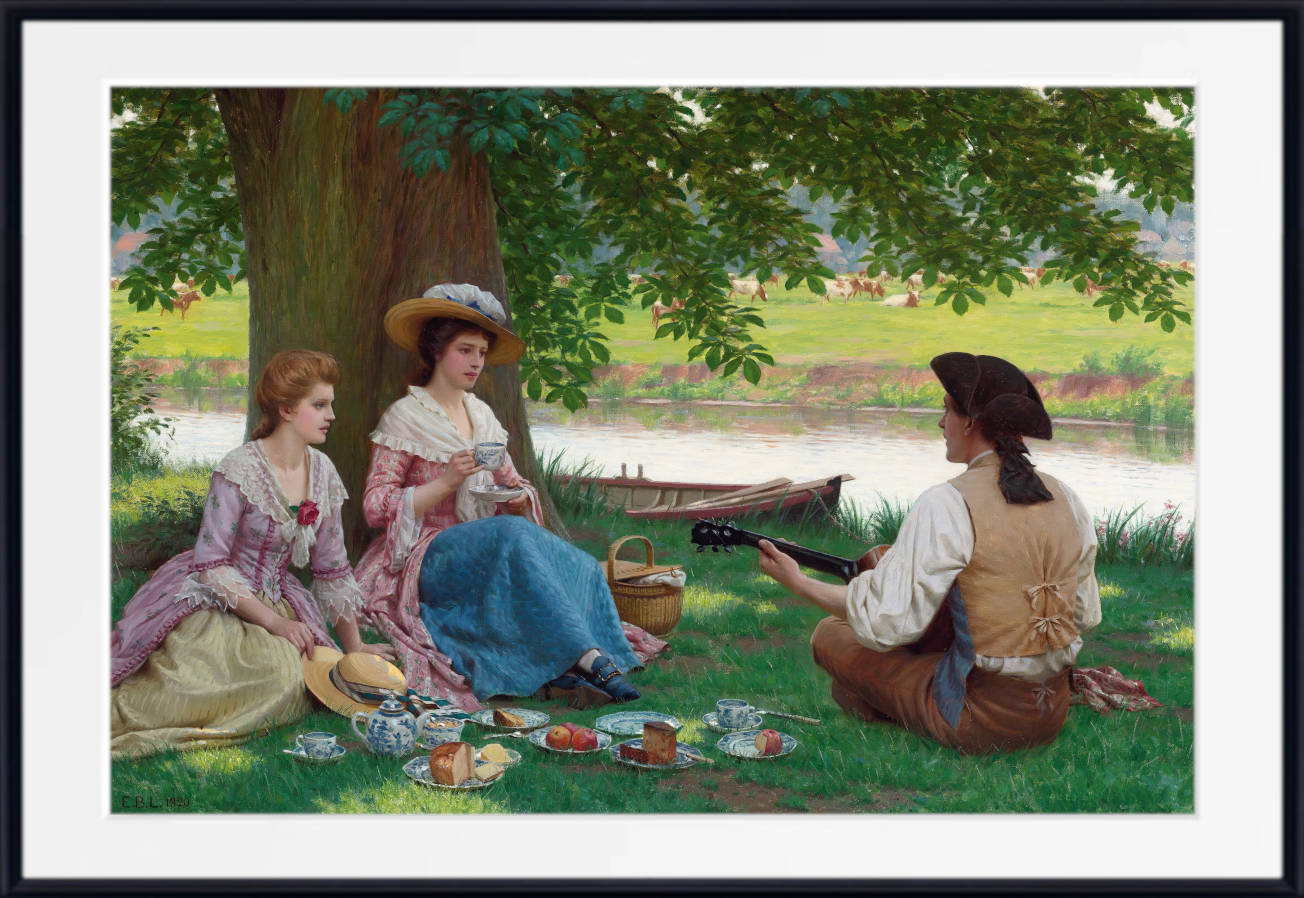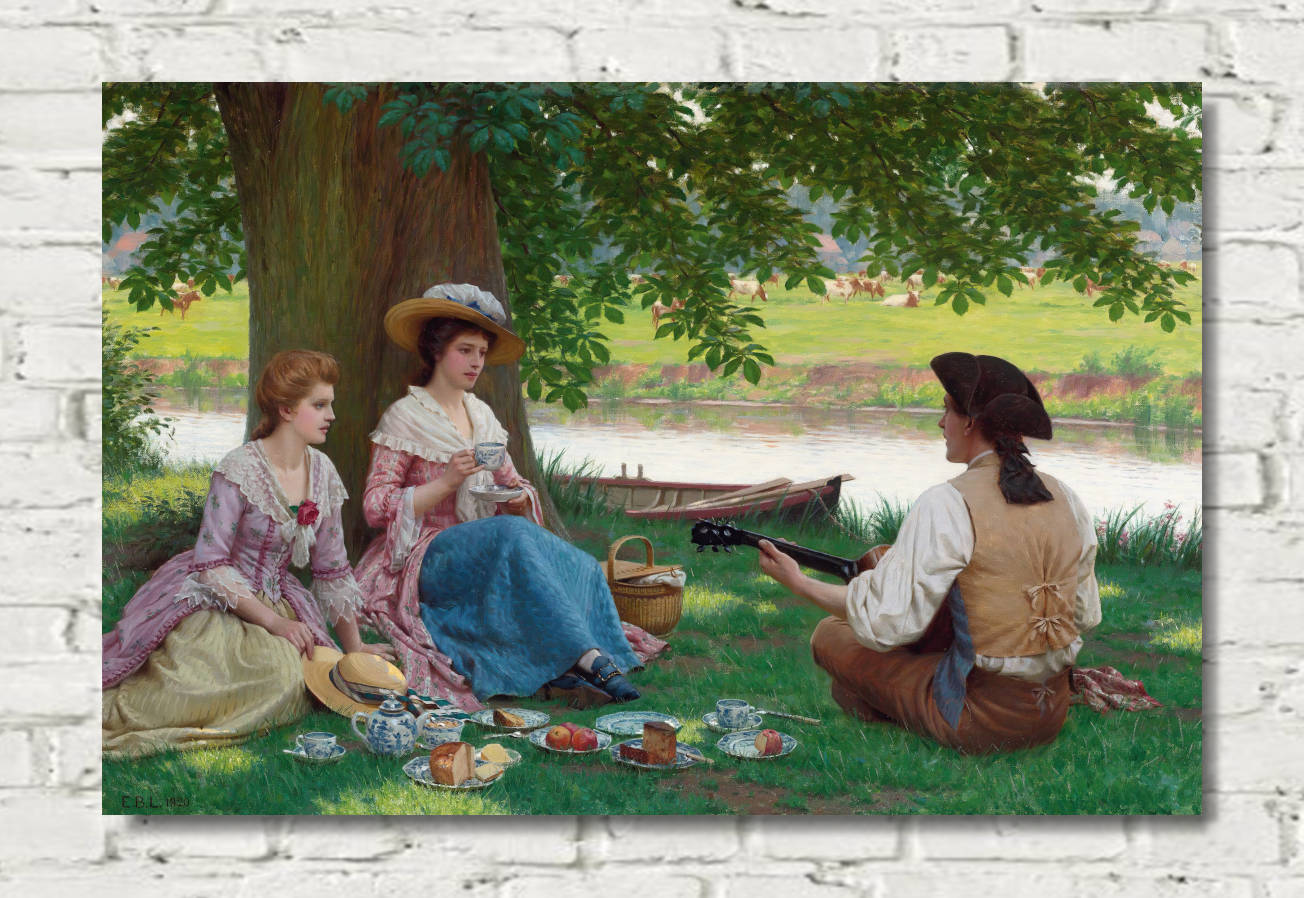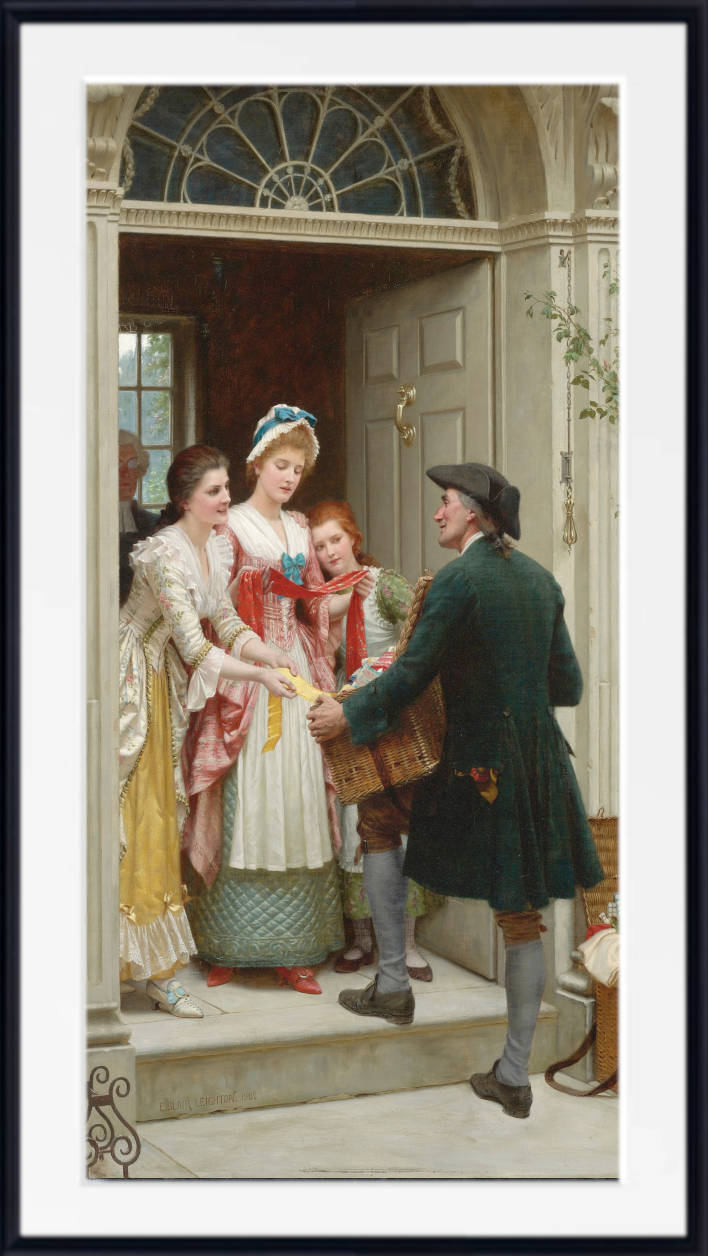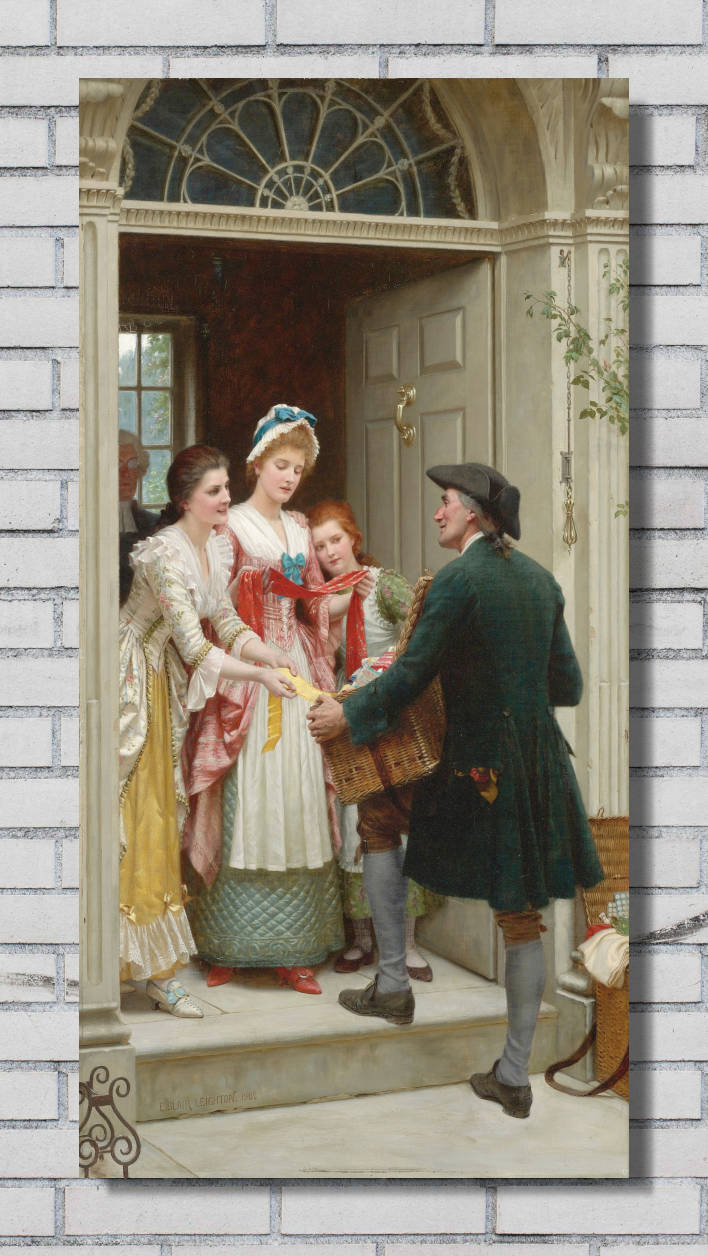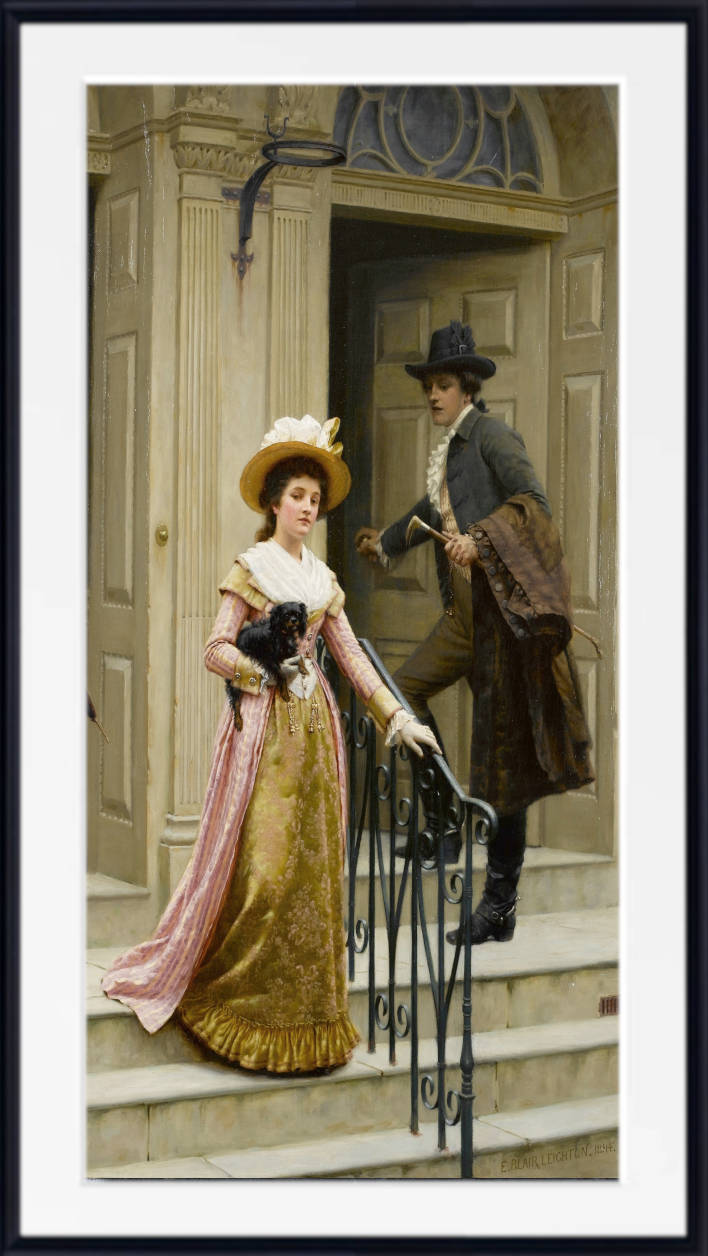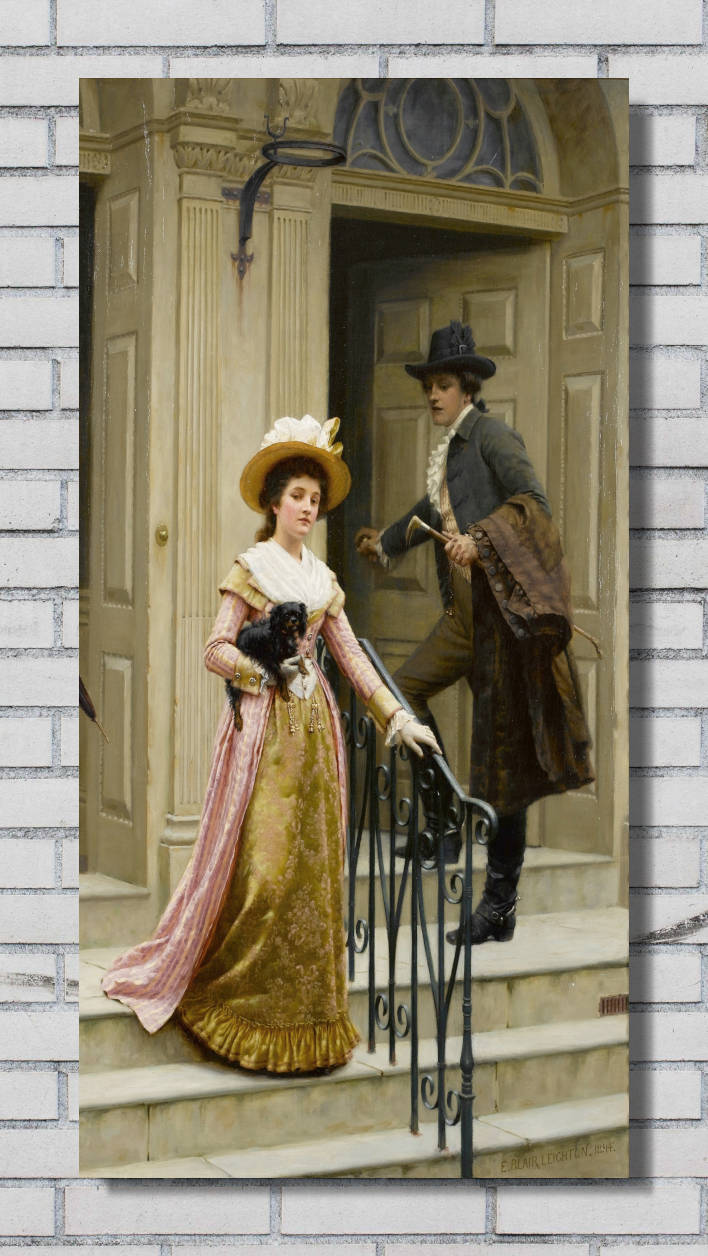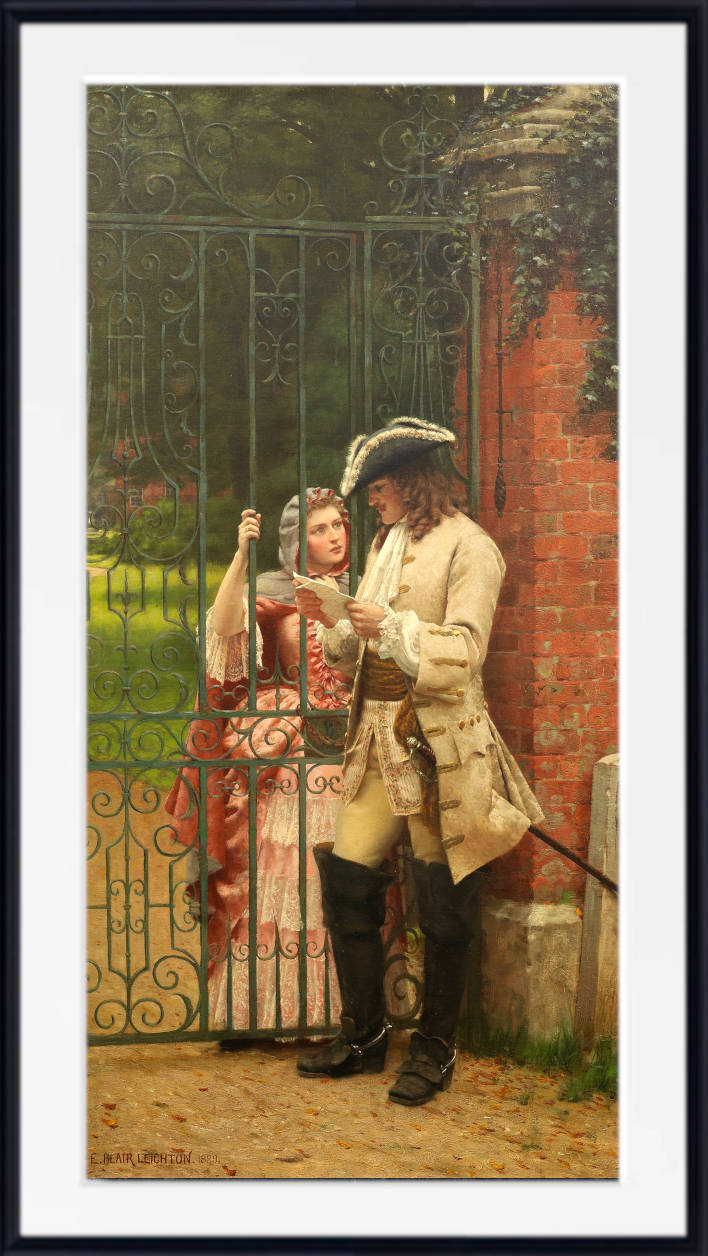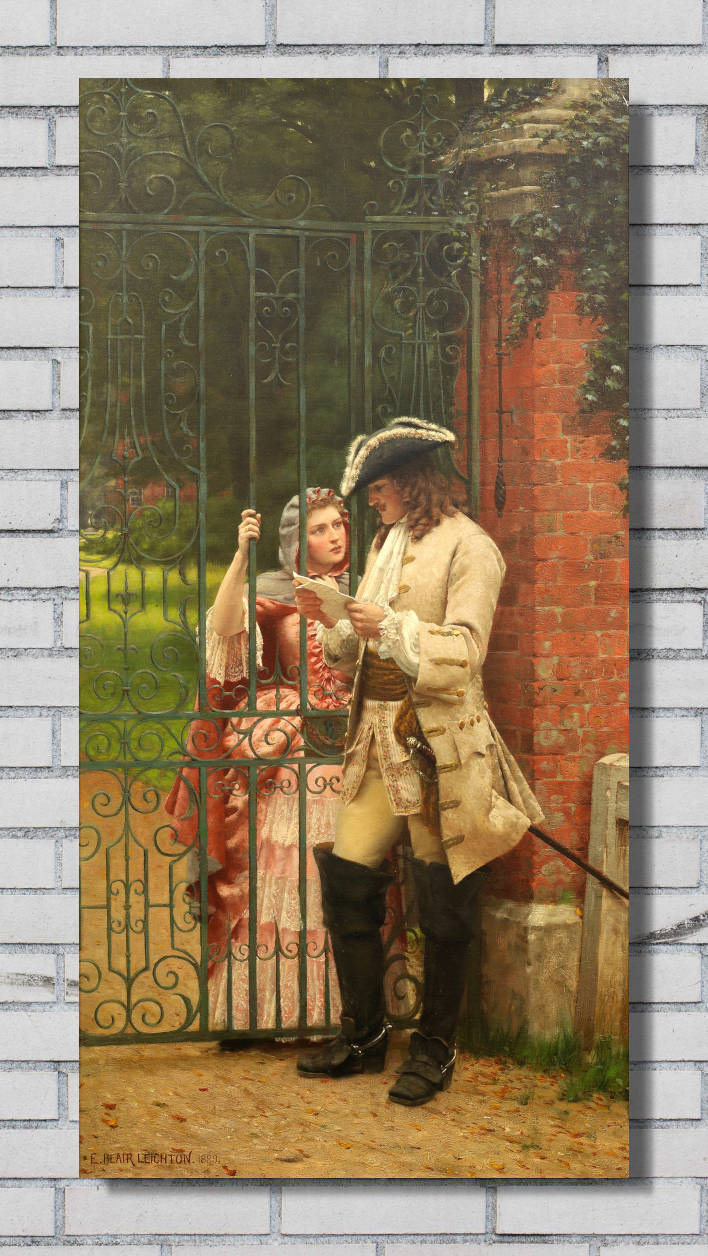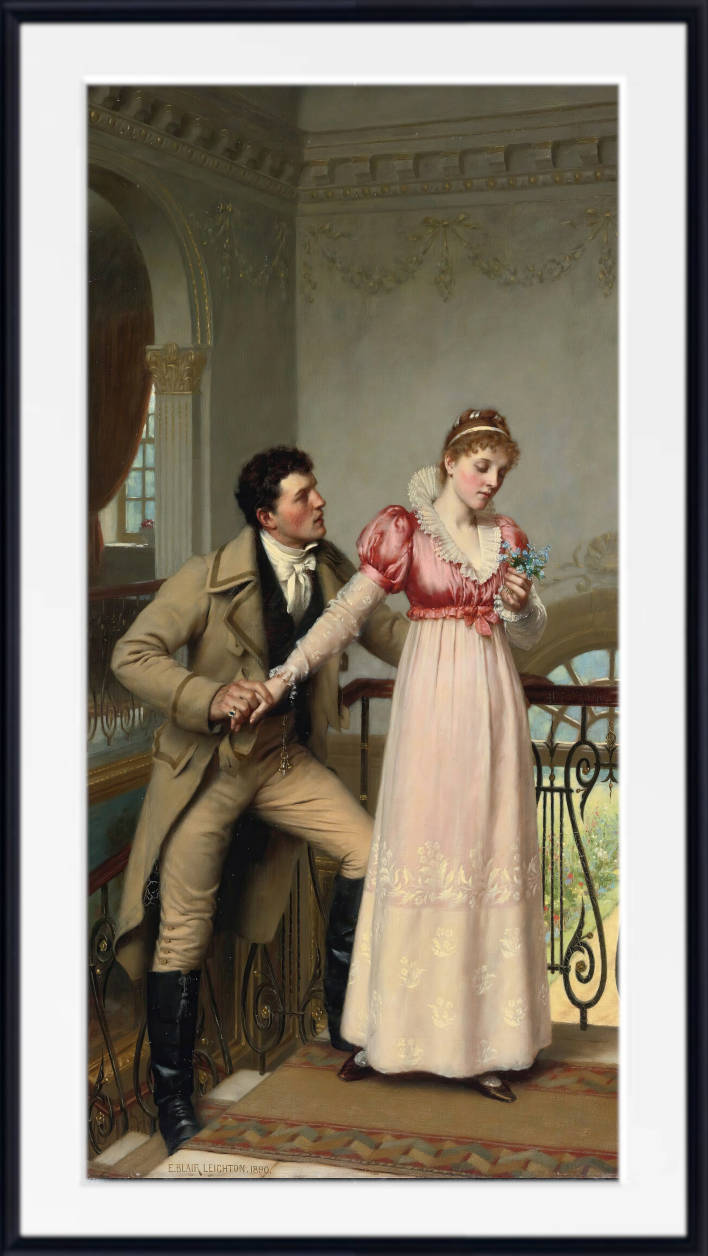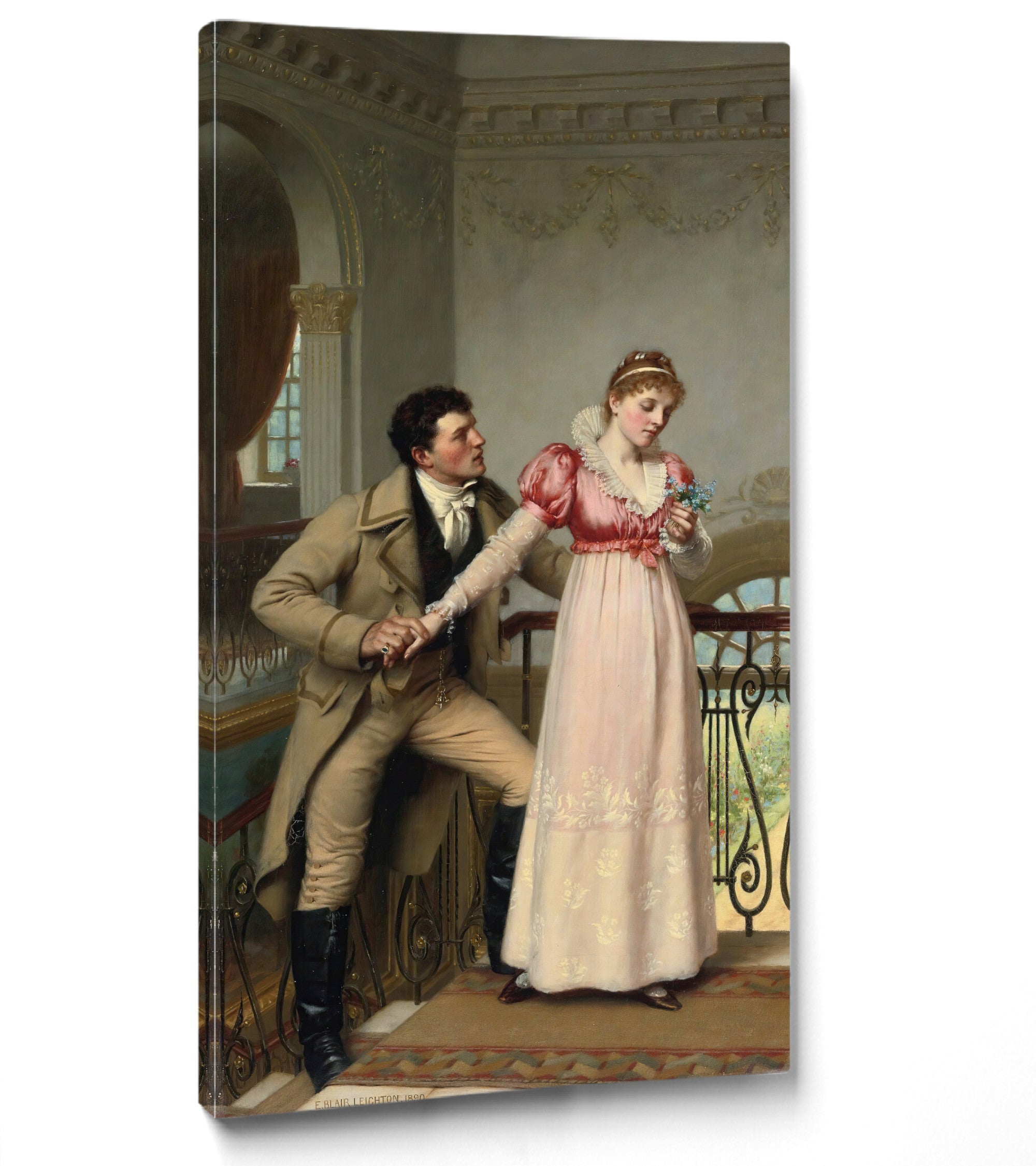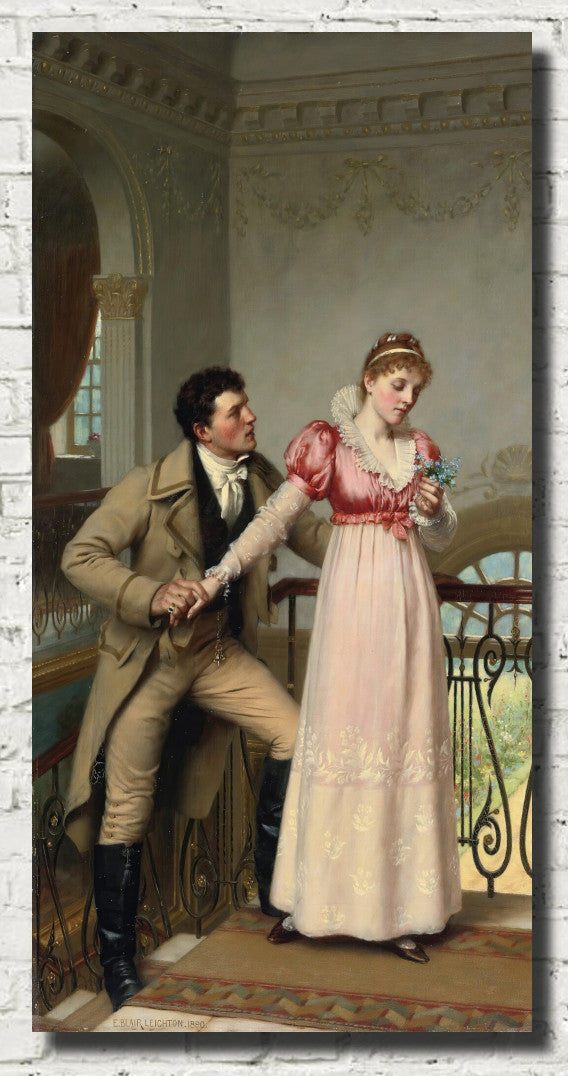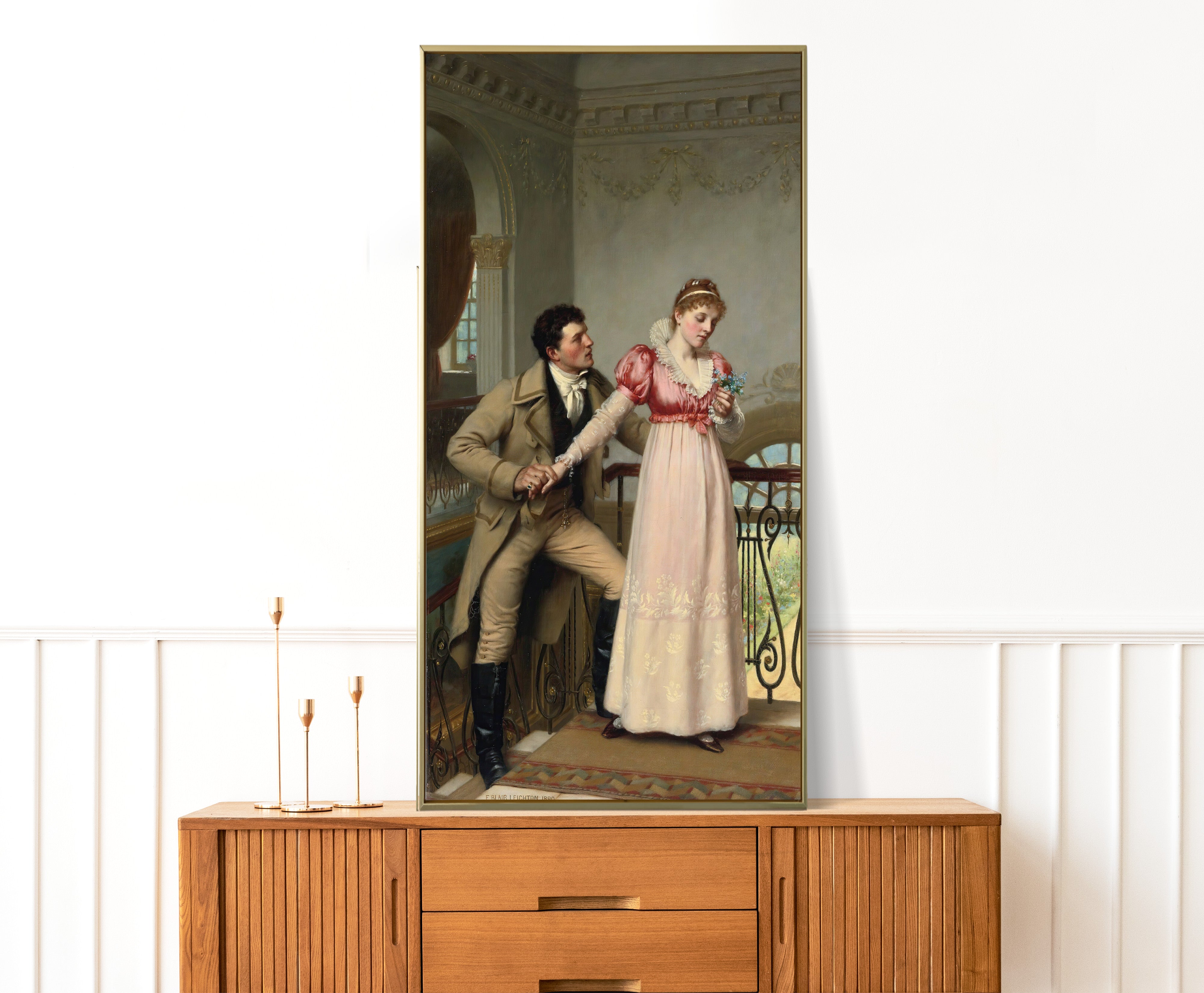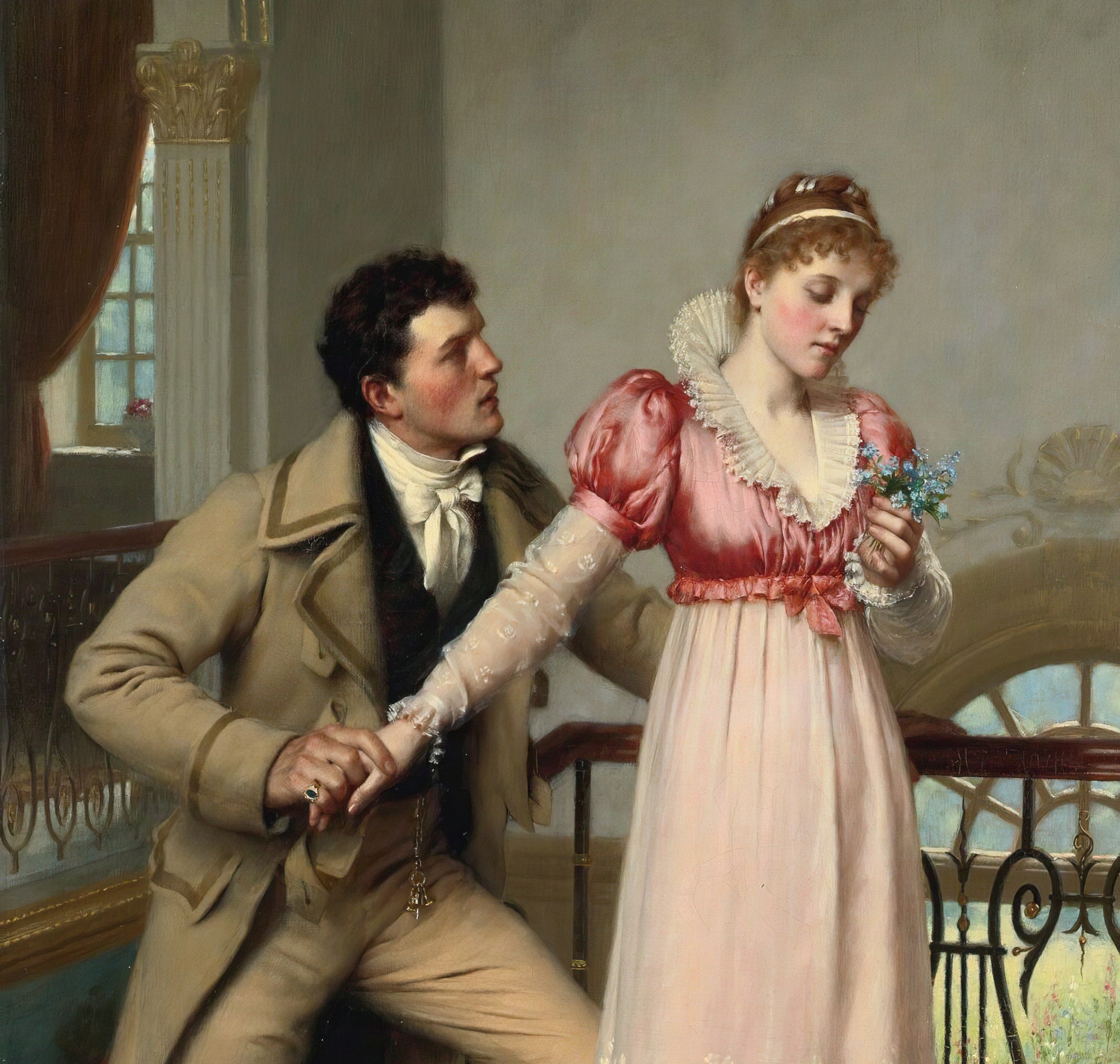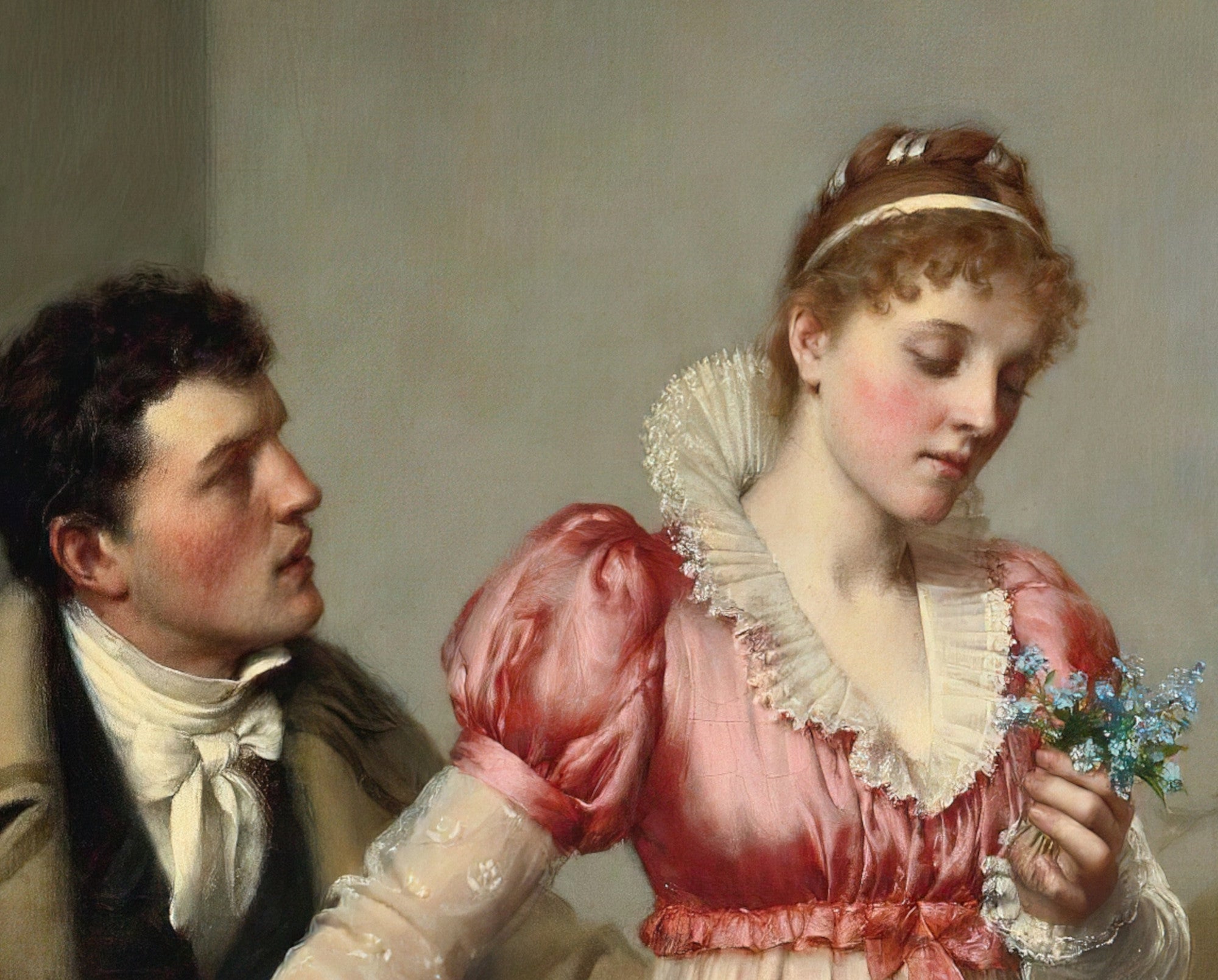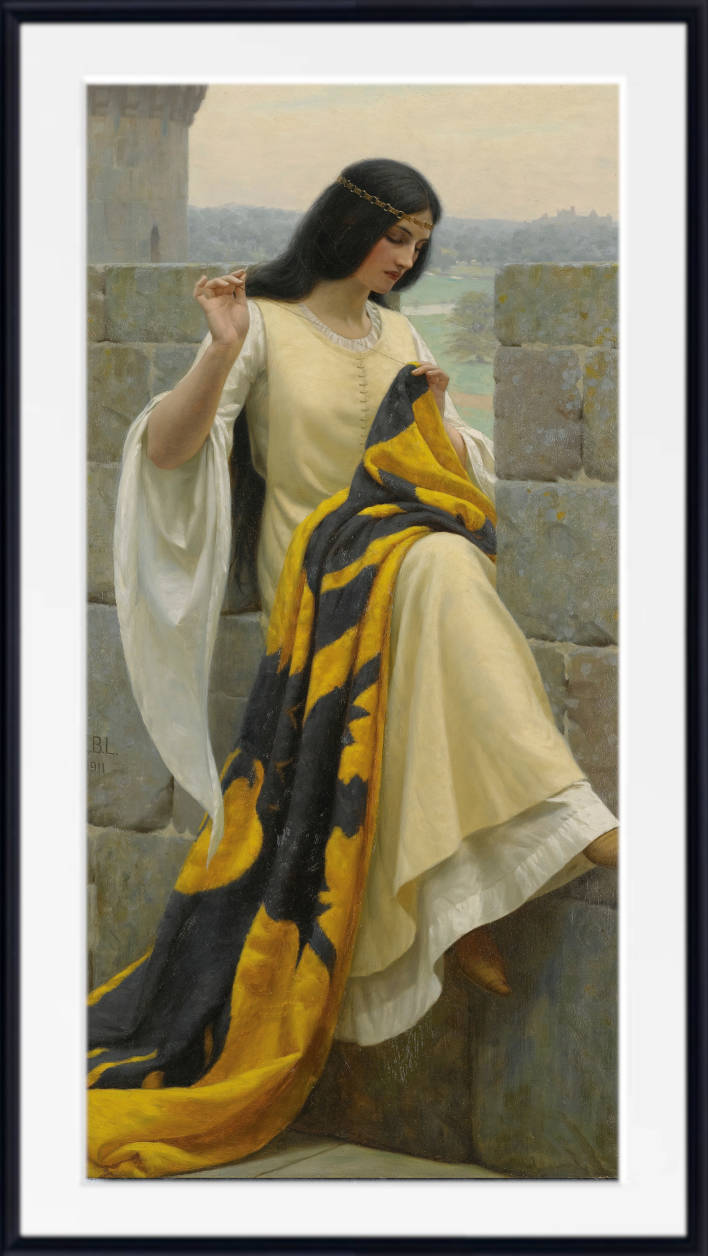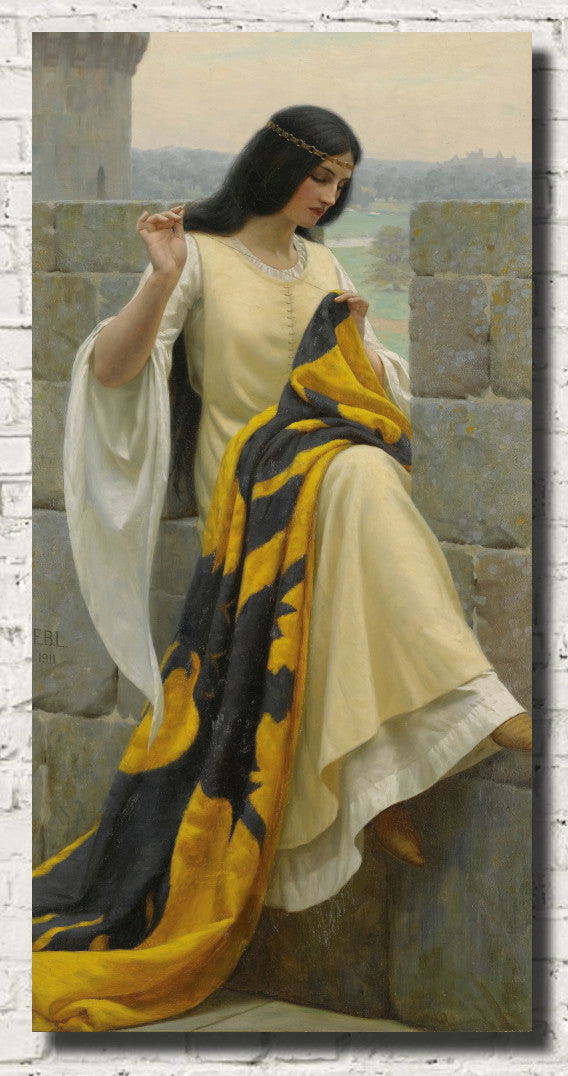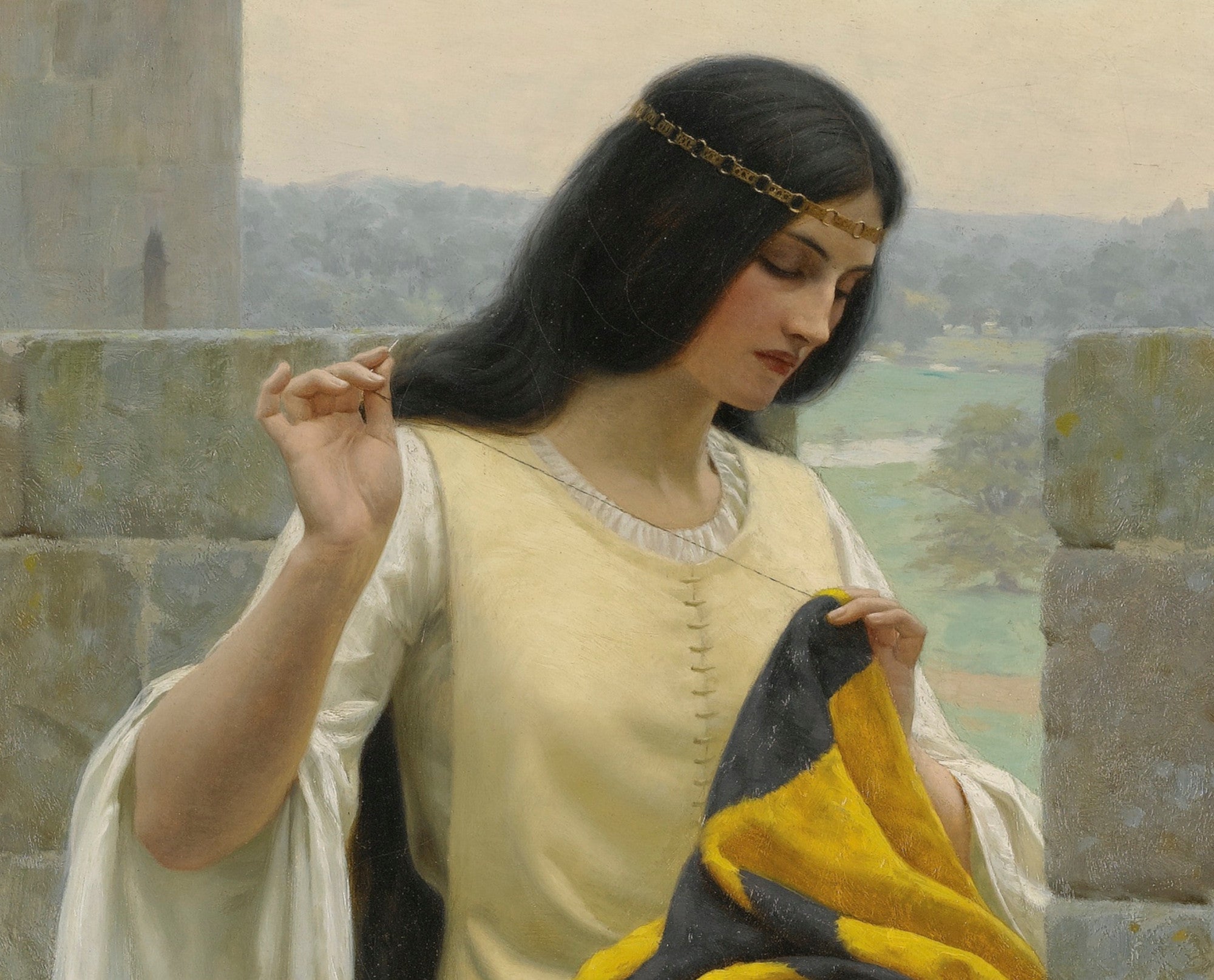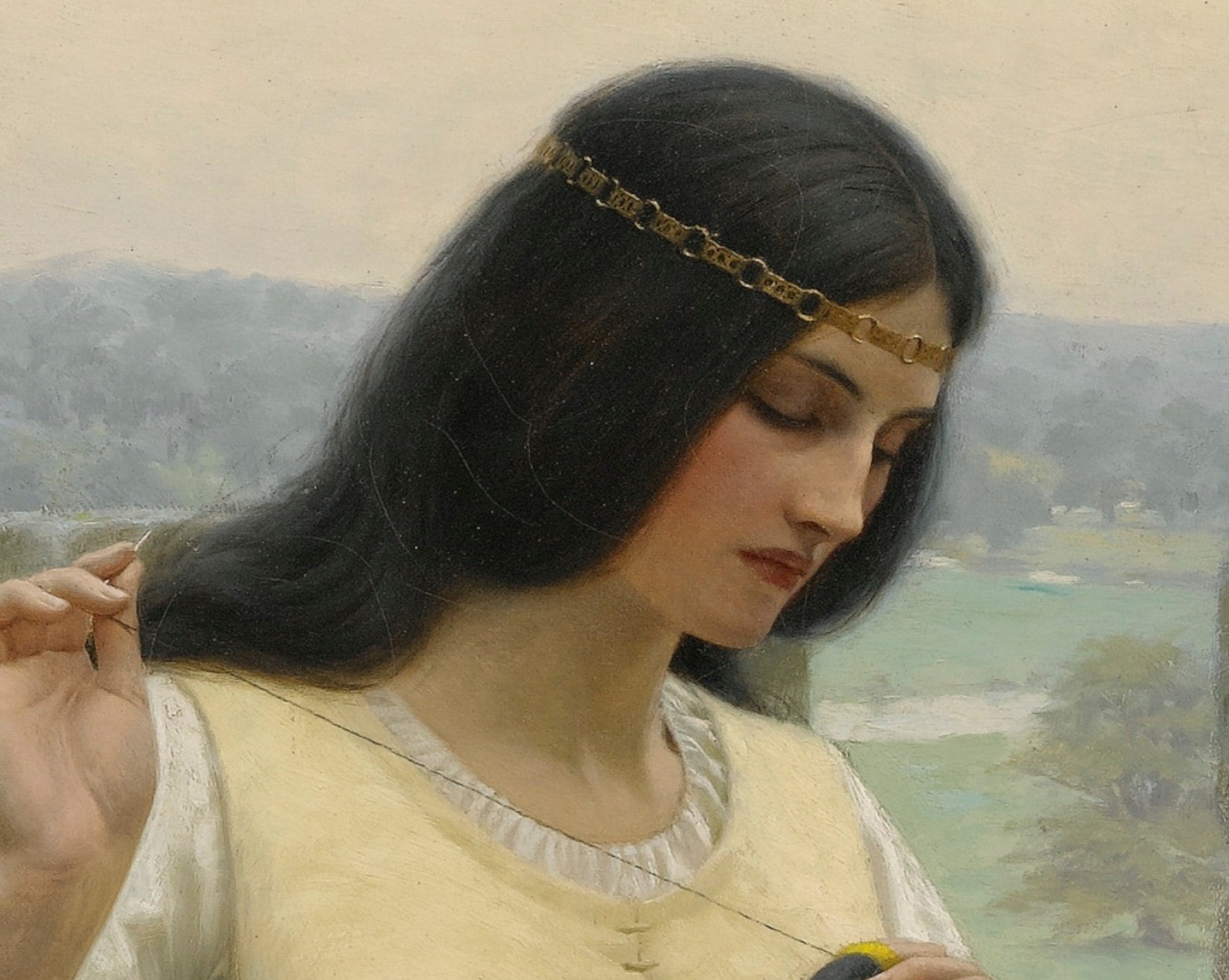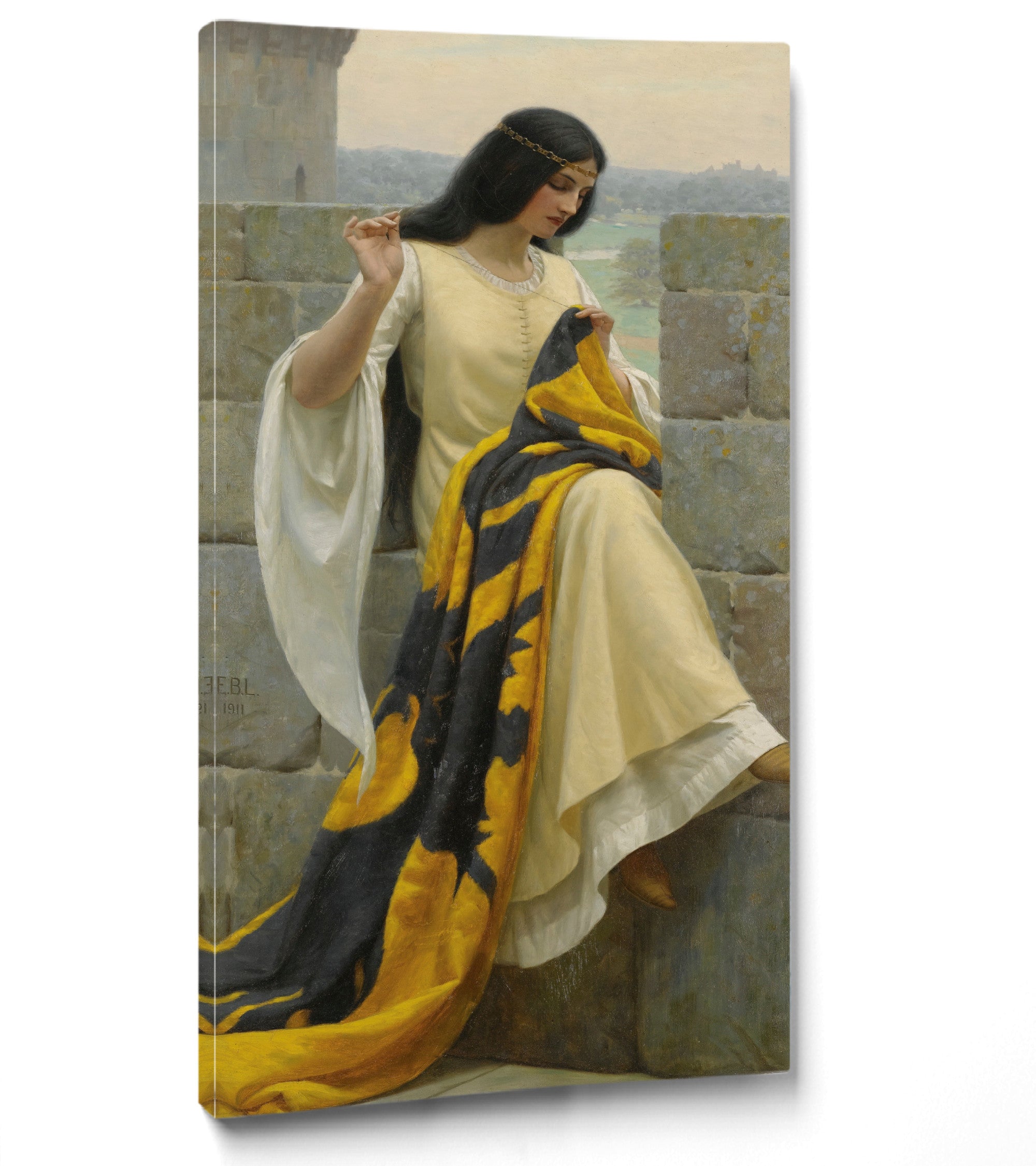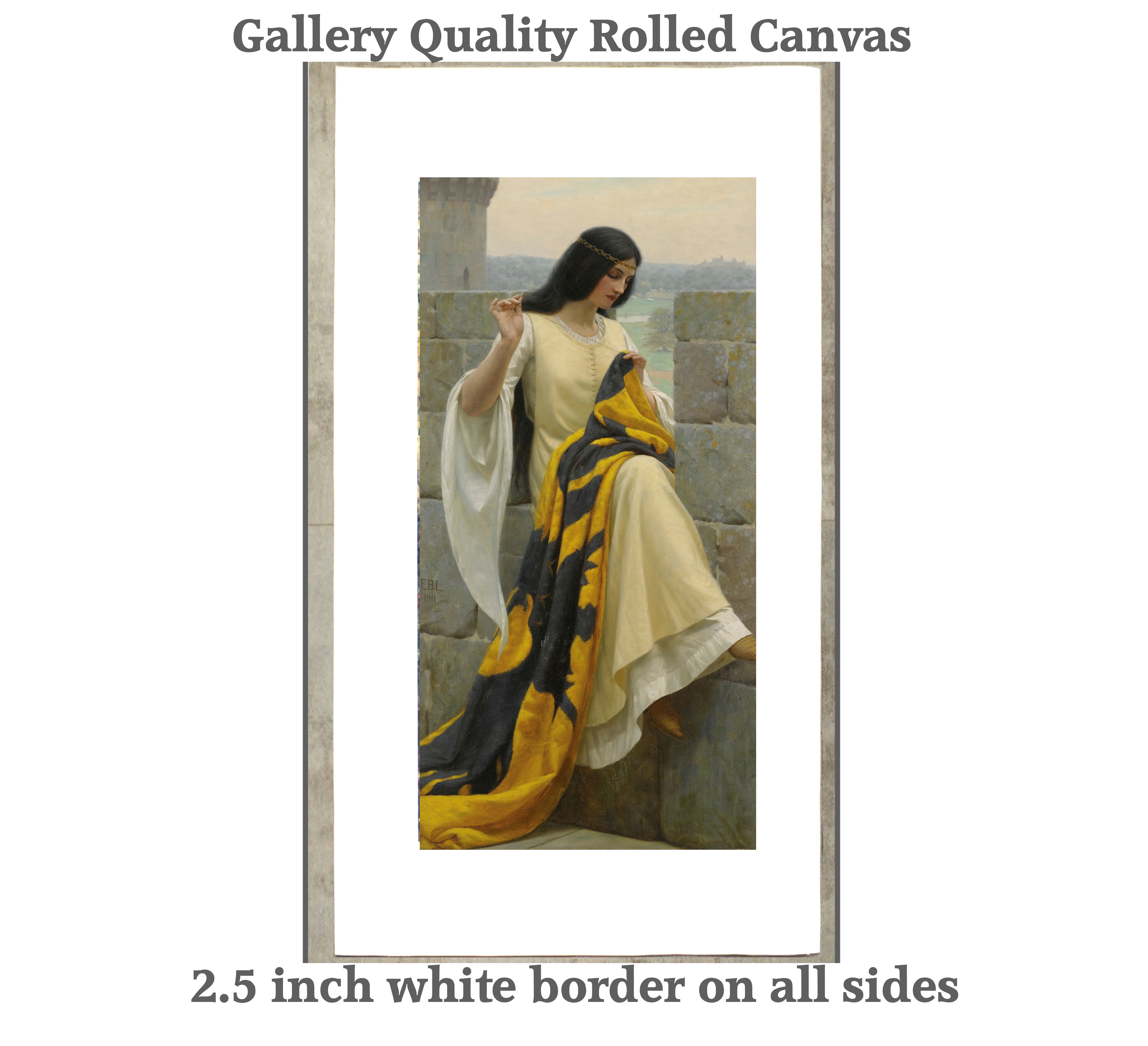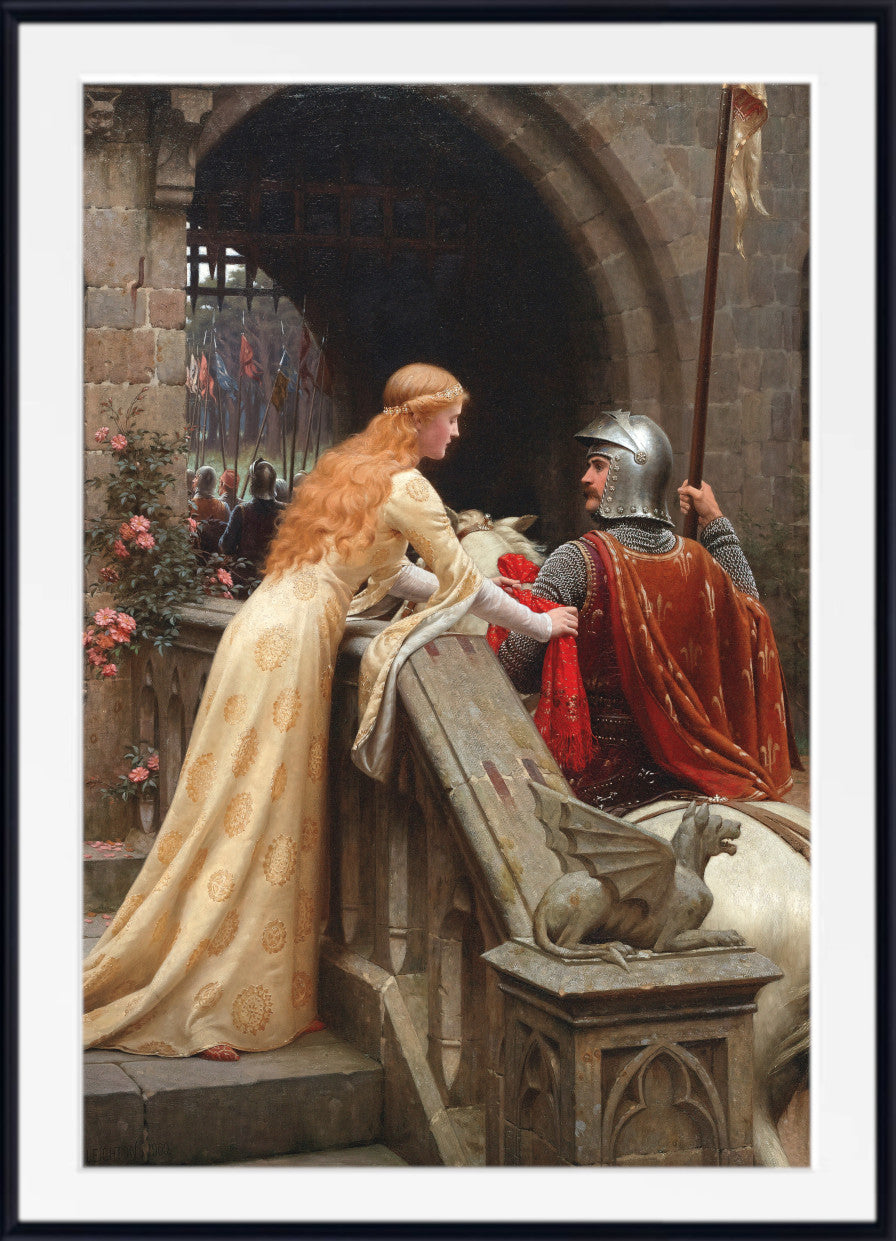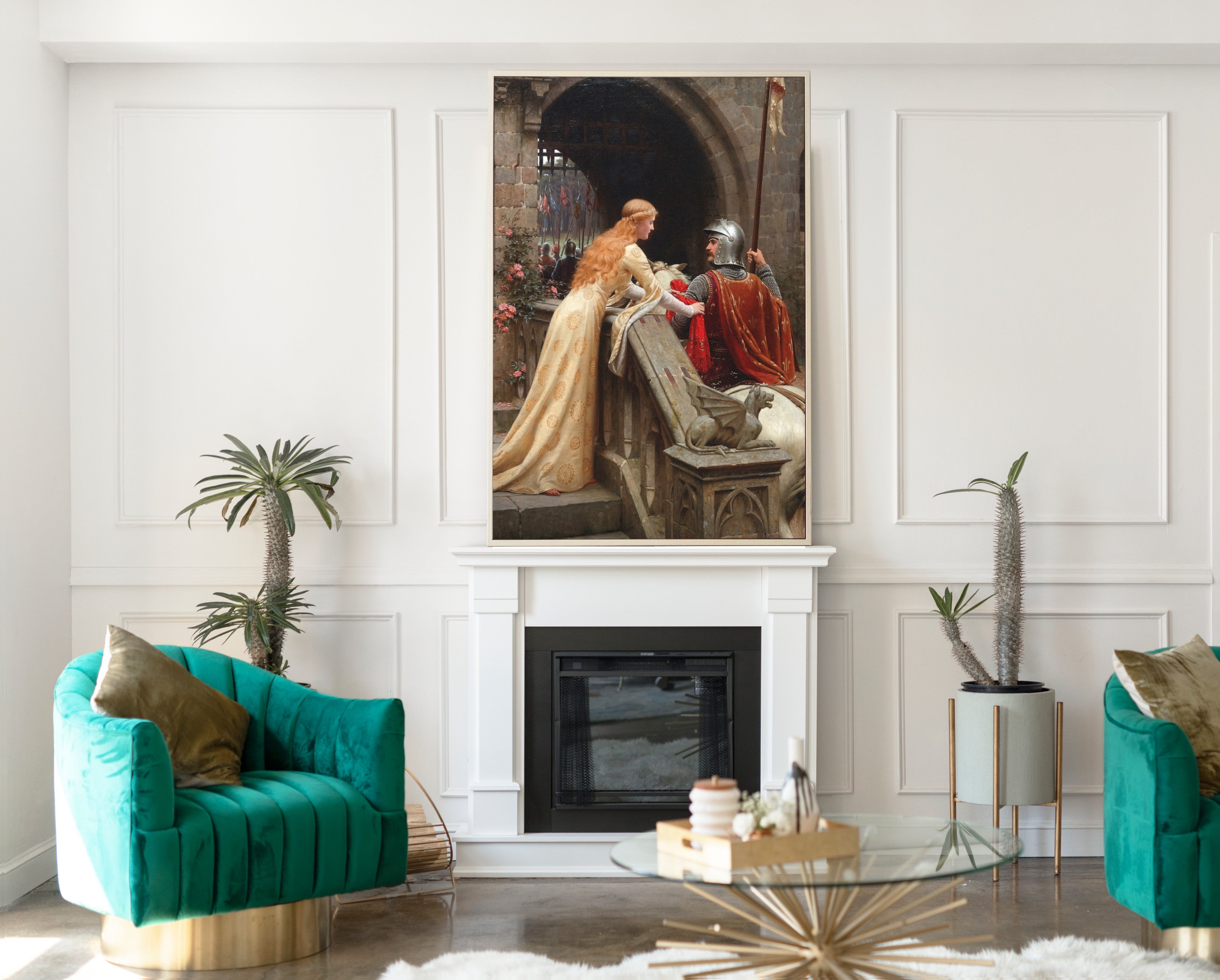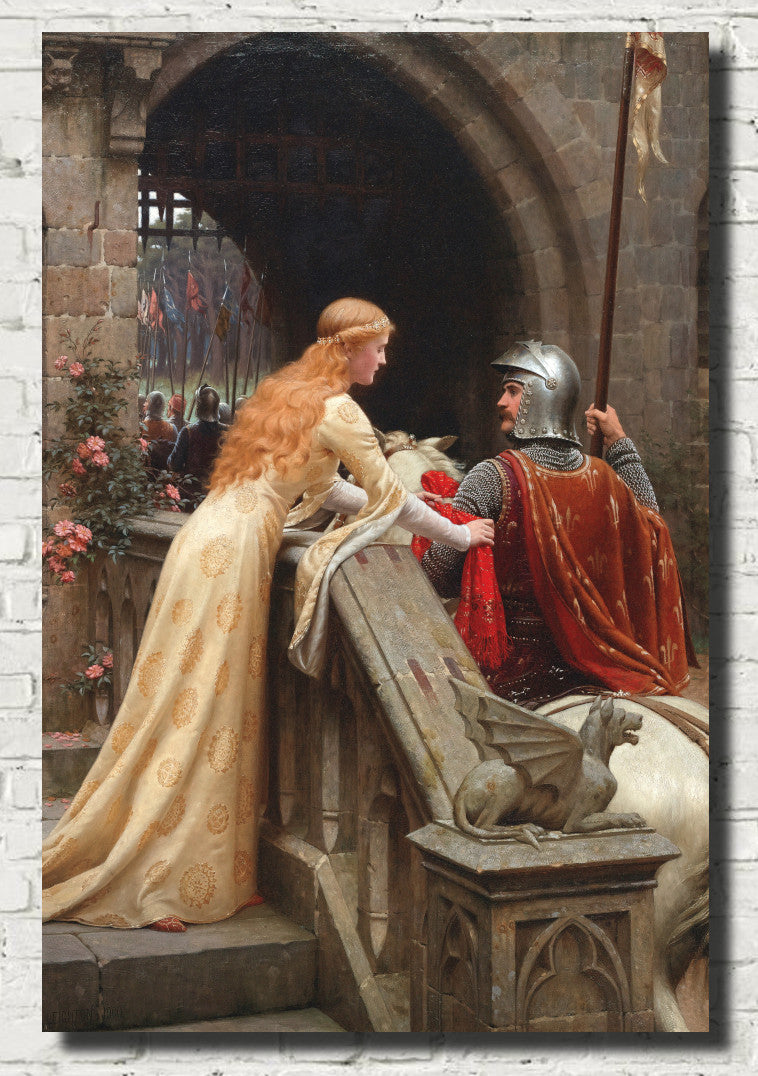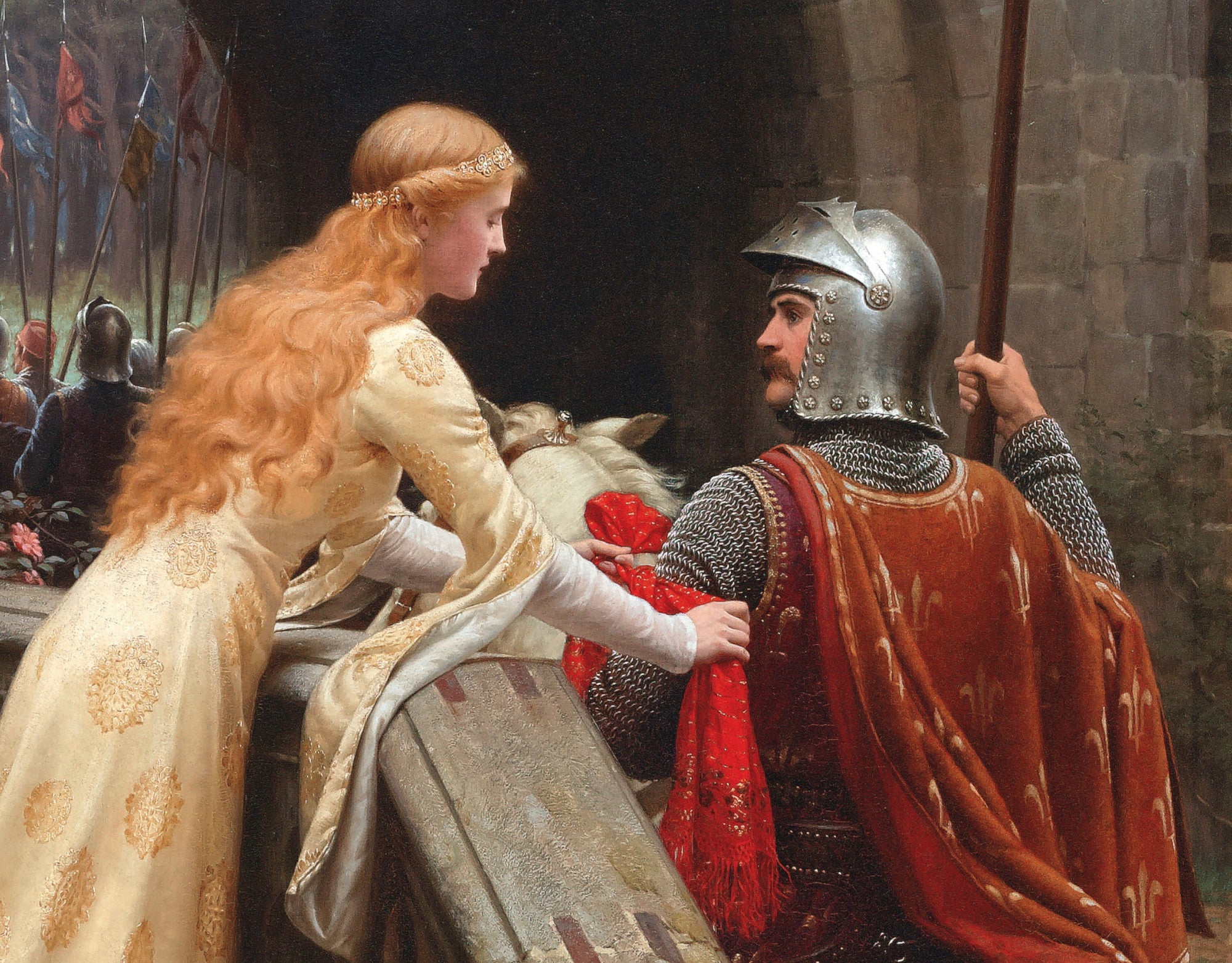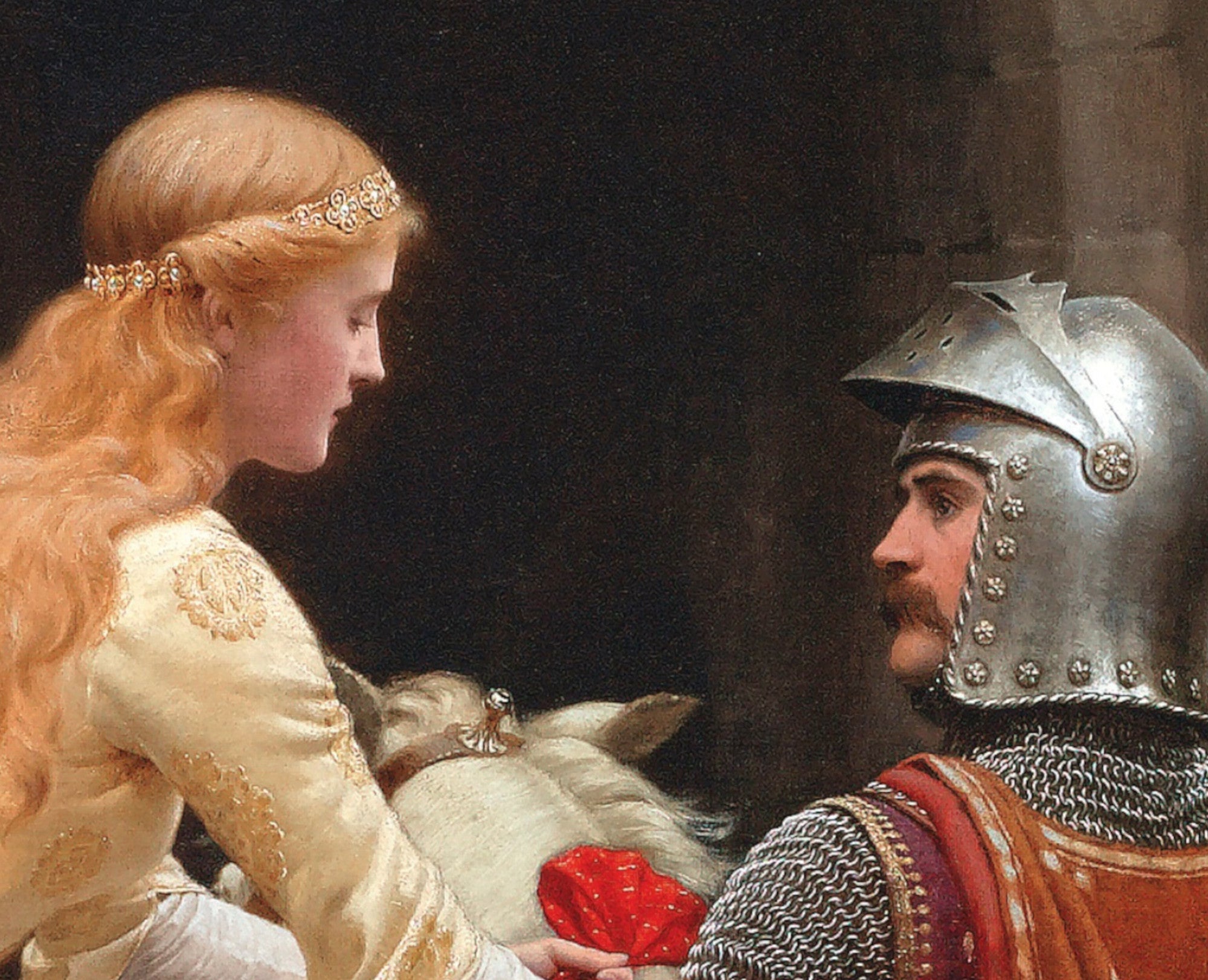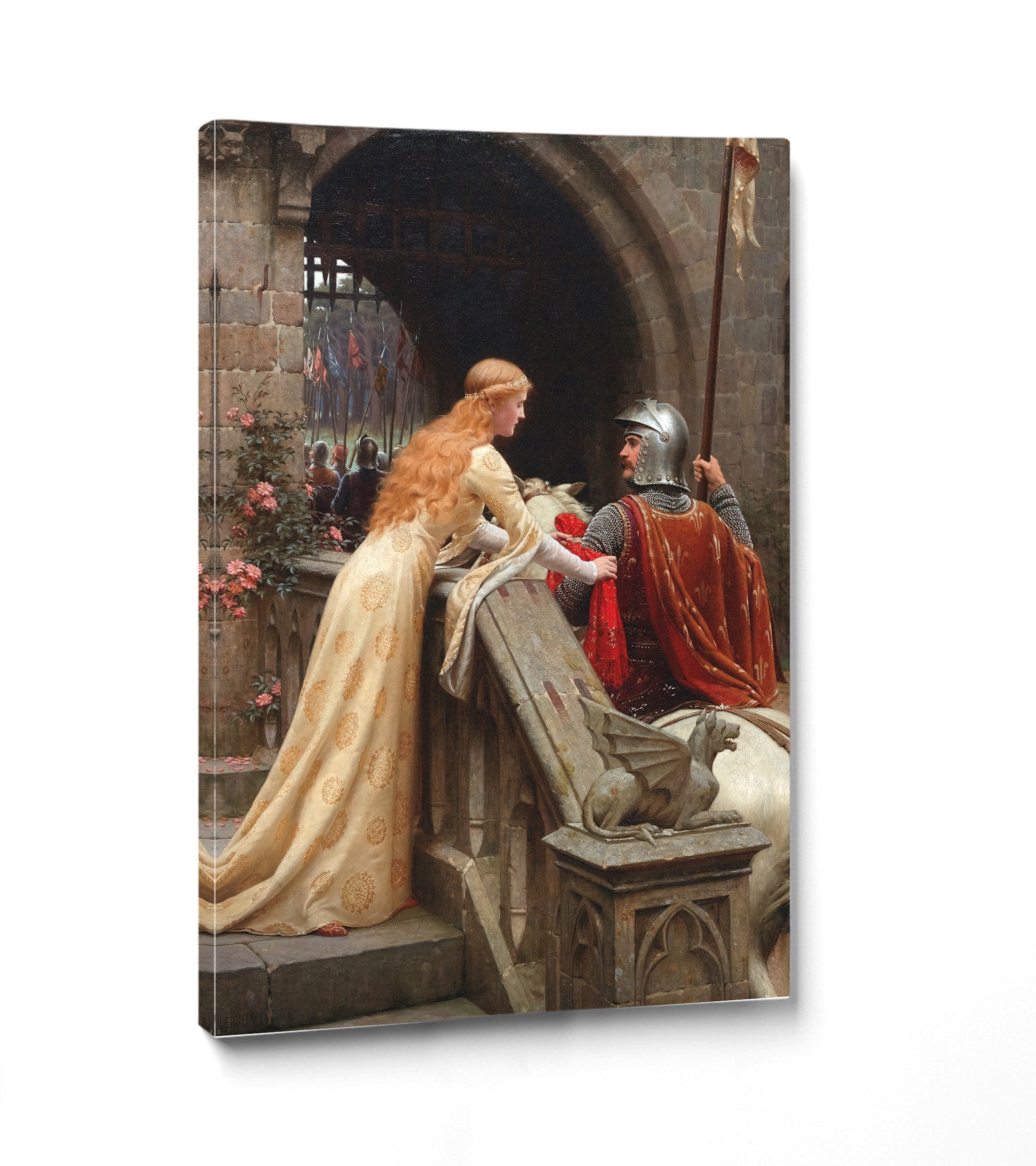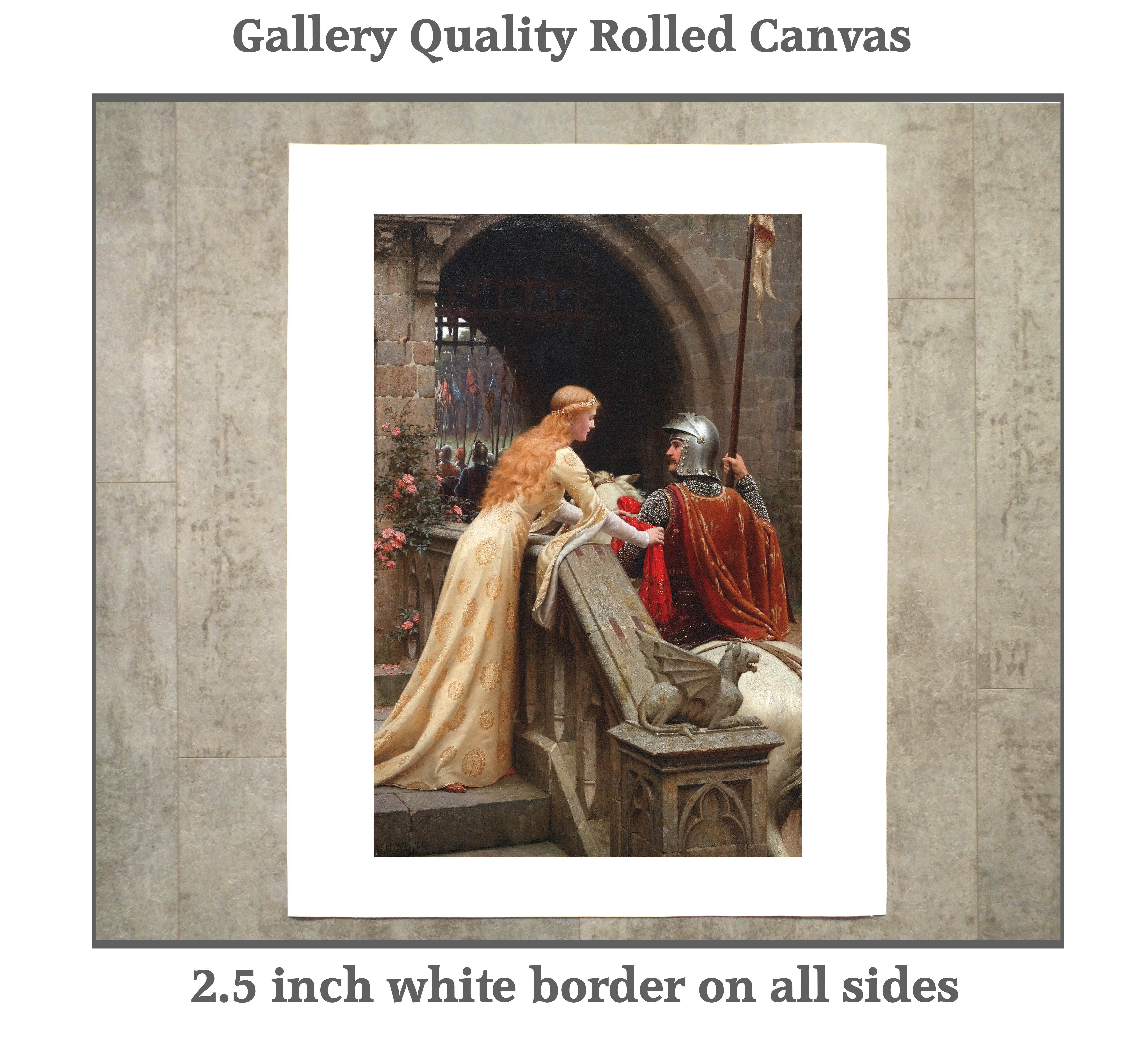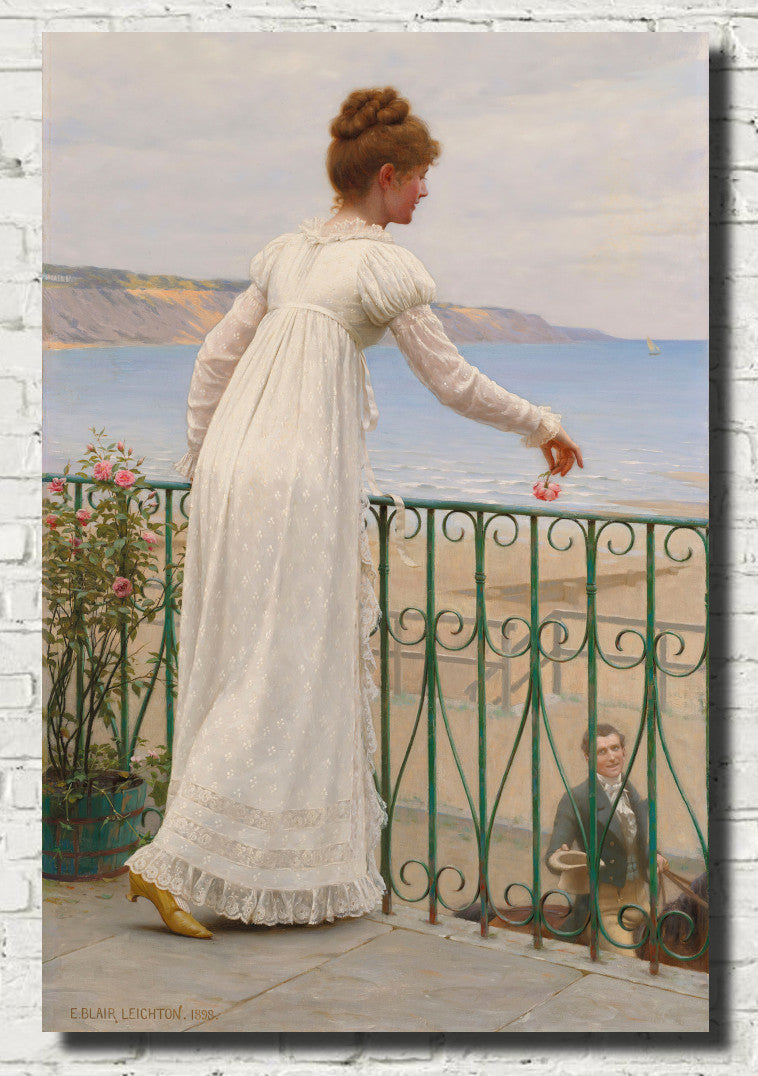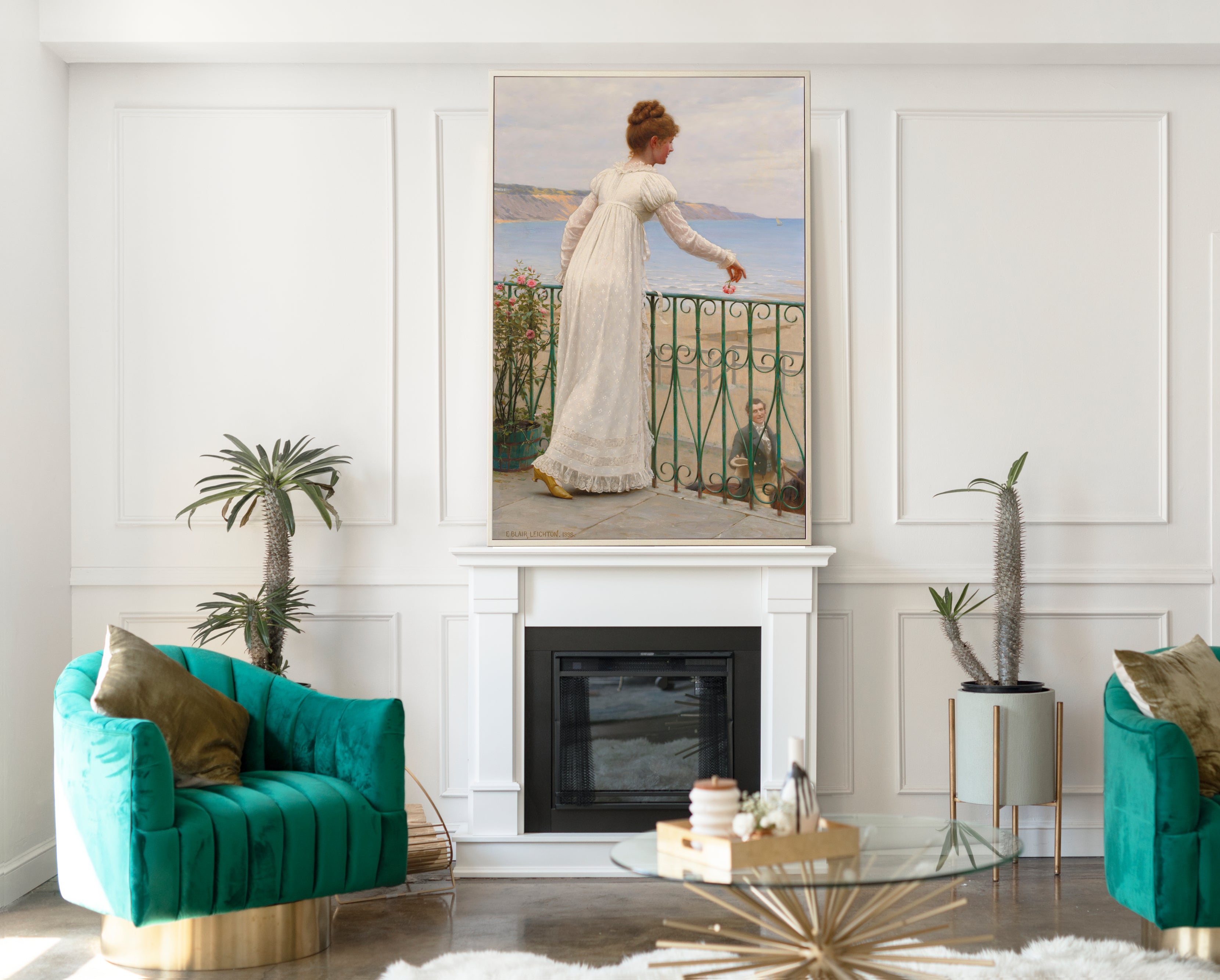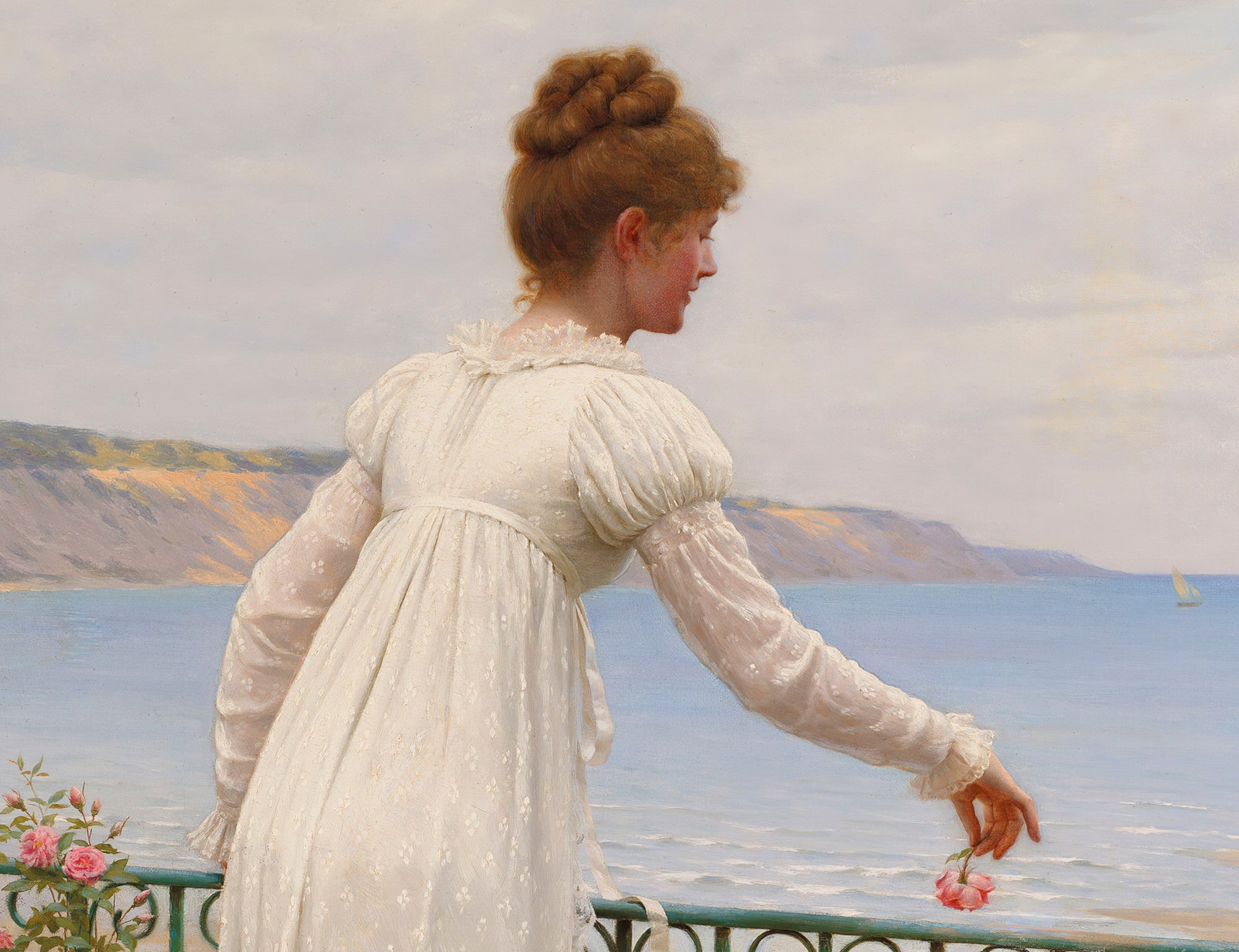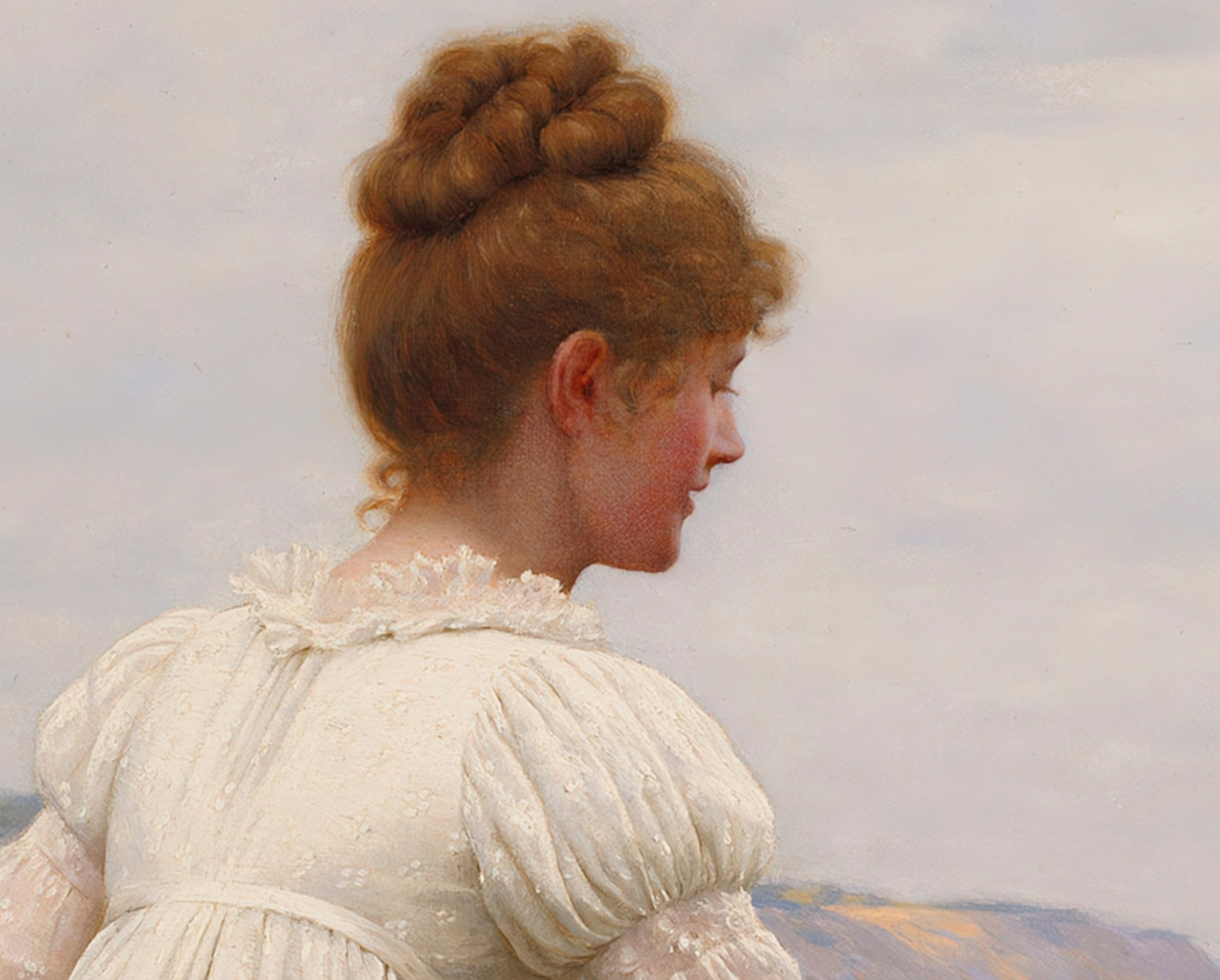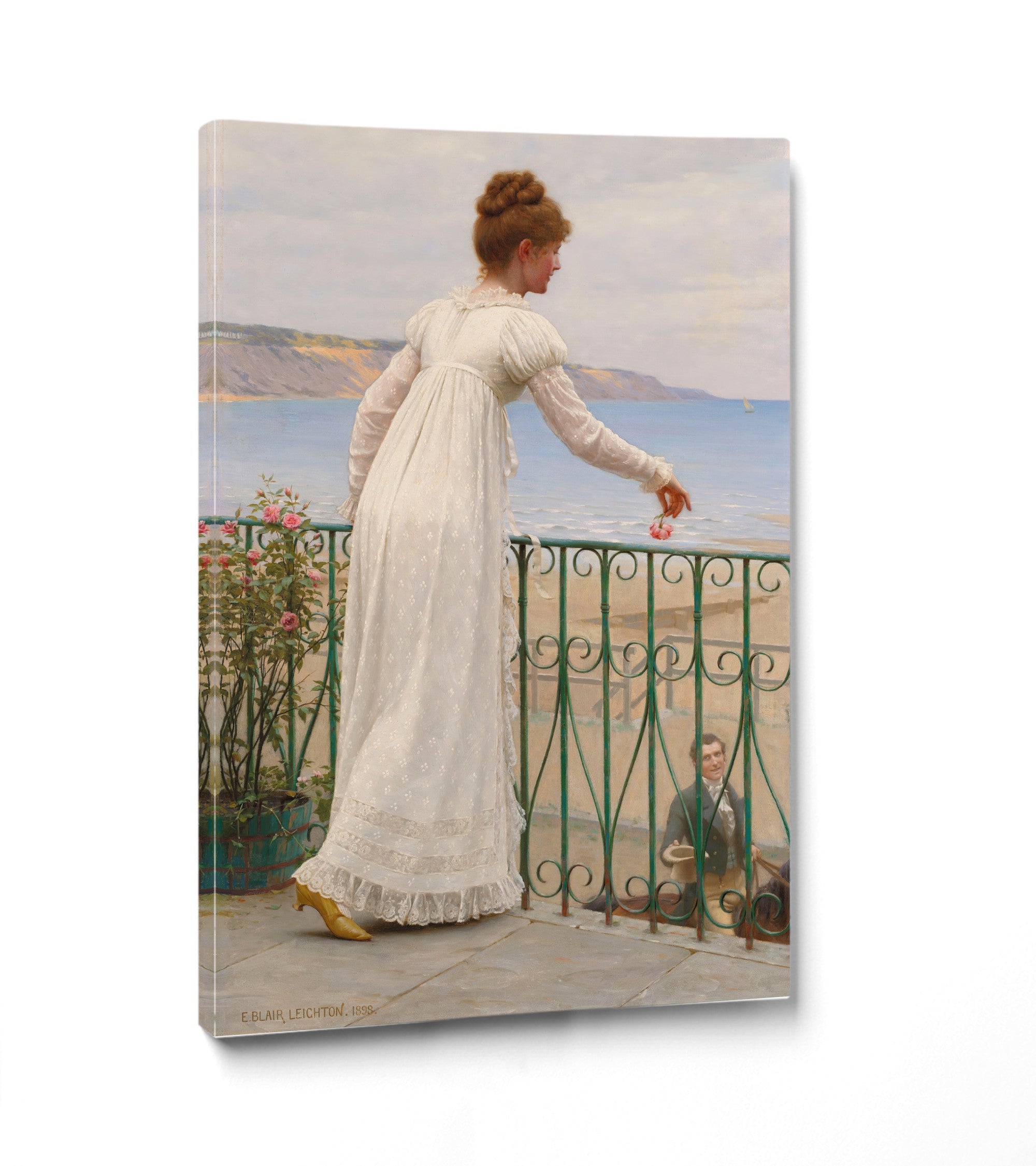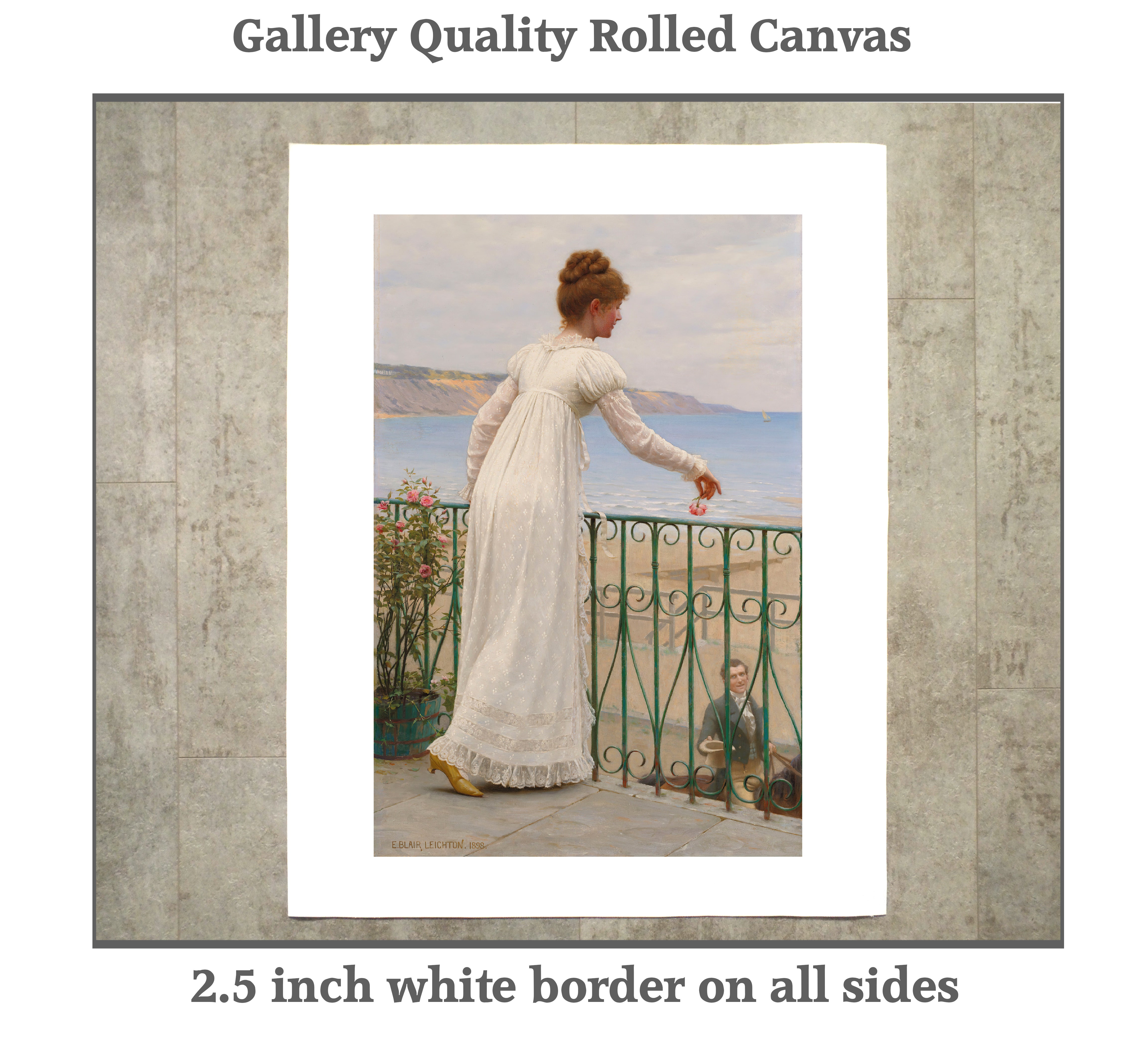Table of Contents:[hide]
Edmund Blair Leighton (1852–1922) was an English artist best known for his meticulously detailed and romanticized depictions of historical and medieval subjects. His works, characterized by their historical accuracy, emotional depth, and technical finesse, remain iconic examples of Victorian and Edwardian genre painting. Leighton’s ability to capture the essence of chivalry, courtship, and quiet domestic moments has made him a beloved figure in the realm of historical art.
Early Life and Artistic Development
Born into an artistic family—his father, Charles Blair Leighton, was also a painter—Edmund Blair Leighton was well-suited for a career in the arts. He studied at the Royal Academy of Arts in London, where he developed his skills in draughtsmanship and composition. While the Pre-Raphaelites heavily influenced the British art scene at the time, Leighton found his niche in genre painting, focusing on historical subjects and scenes of romantic chivalry, which were immensely popular in the Victorian period.
Leighton’s attention to historical detail and his polished, almost photographic technique set him apart from his contemporaries. His works were not just visually appealing but also evoked a sense of nostalgia and idealism, resonating deeply with audiences of his time.
"Stitching the Standard" (1911)
One of Leighton’s most renowned works, "Stitching the Standard," captures a moment of quiet patriotism and dedication. The painting depicts a medieval lady sewing a banner for her knight, who stands behind her, ready for battle. The intricate detail in the fabric, the rich colors of the lady’s gown, and the tender expression on her face showcase Leighton's mastery of texture and emotion.
This piece reflects the artist’s fascination with themes of duty and devotion. The composition is meticulously planned, with the banner drawing the eye to the center, while the soft light streaming through the window enhances the intimate atmosphere. Leighton’s attention to historical accuracy is also evident in the costumes and setting, which transport the viewer to a romanticized medieval world.
"God Speed" (1900)
Perhaps Leighton’s most famous painting, "God Speed" depicts a knight bidding farewell to his lady before setting off on a quest. The knight descends the castle steps, his armor gleaming, while his lady ties a token—a piece of fabric—around his arm as a gesture of love and protection. The knight’s posture, half-turned yet resolute, contrasts with the lady’s delicate, tender stance, emphasizing the emotional tension of the moment.
Leighton’s use of light and color enhances the painting’s romantic mood. The warm glow surrounding the lady contrasts with the knight’s cooler, more somber tones, suggesting the emotional distance that their impending separation will bring. "God Speed" perfectly encapsulates the themes of chivalry, romance, and sacrifice that permeate Leighton’s work, making it an enduring symbol of courtly love.
"My Next Door Neighbour" (1894)
Moving away from medieval themes, "My Next Door Neighbour" reflects Leighton’s talent for portraying Regency-era domestic life. The painting depicts two women, neighbors, engaged in conversation over a garden fence. One woman, standing in her garden, looks up at her neighbor on the balcony above, creating a charming and intimate narrative about the bonds of everyday life.
Leighton’s attention to detail extends to the floral arrangements and the soft drapery of the women’s dresses, enhancing the painting’s sense of realism. The warm tones and soft light create a serene and inviting atmosphere, reflecting the simplicity and grace of domestic life in the late 19th century. Through this work, Leighton captures the subtle beauty of human connection and community, themes that resonated with his audience.
"The Appointed Time" (1890)
"The Appointed Time" is another Regency-era scene, showcasing Leighton’s interest in courtship and romantic tension. The painting portrays a young man waiting by the gate, anxiously waiting. The moment captures the anticipation and hope of a romantic rendezvous.
Leighton’s use of natural light in this painting is particularly striking. The sunlight filtering through the foliage in the background casts a soft glow on the leaves of the trees. The waiting cavalryman is painted in a tense pose with one hand on his sword.
"The Appointed Time" exemplifies Leighton’s ability to infuse everyday moments with a sense of timeless emotional depth.
Style and Legacy
Leighton’s paintings are marked by their precision and refinement. His works often depict idealized versions of historical or domestic life, free from the harsh realities of the time periods he portrayed. This romanticized view of the past was deeply appealing to Victorian and Edwardian audiences, who sought comfort and escapism in the face of rapid societal change.
Leighton’s technical skills, particularly his ability to render fabrics, textures, and light with exquisite realism, earned him critical acclaim during his lifetime. He exhibited regularly at the Royal Academy and enjoyed commercial success, yet his name has often been overlooked in the broader art historical narrative.
Today, Leighton’s work is admired for its craftsmanship and for capturing the essence of romantic nostalgia. His scenes of chivalry, courtship, and domestic life offer a window into the idealized vision of the past that continues to enchant modern audiences.
Conclusion
Edmund Blair Leighton remains one of the most accomplished painters of historical genre scenes, particularly those focusing on medieval and Regency subjects. Through works like "Stitching the Standard," "God Speed," "My Next Door Neighbour," and "The Appointed Time," Leighton immortalized moments of romance, duty, and quiet domesticity, all rendered with extraordinary detail and emotional resonance. His legacy as a master of historical genre painting endures, and his art continues to captivate with its timeless appeal.

